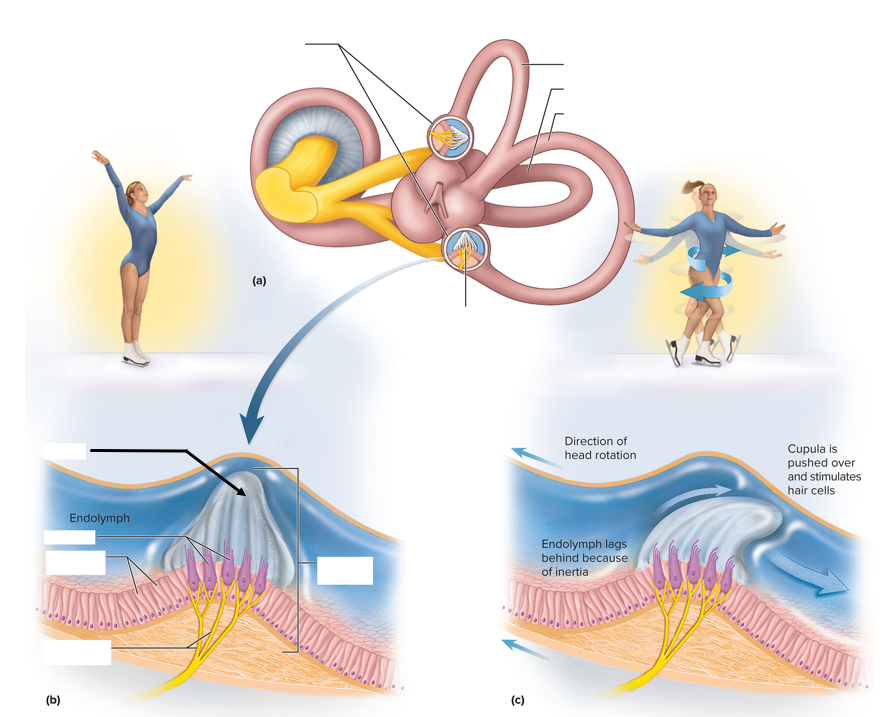A&P Mini Practical 8 - General and Special Senses
1/71
There's no tags or description
Looks like no tags are added yet.
Name | Mastery | Learn | Test | Matching | Spaced |
|---|
No study sessions yet.
72 Terms
Photoreceptors
Stimulated by light. Special sense (vision)

Thermoreceptors
Stimulated by temperature. General sense (temperature)
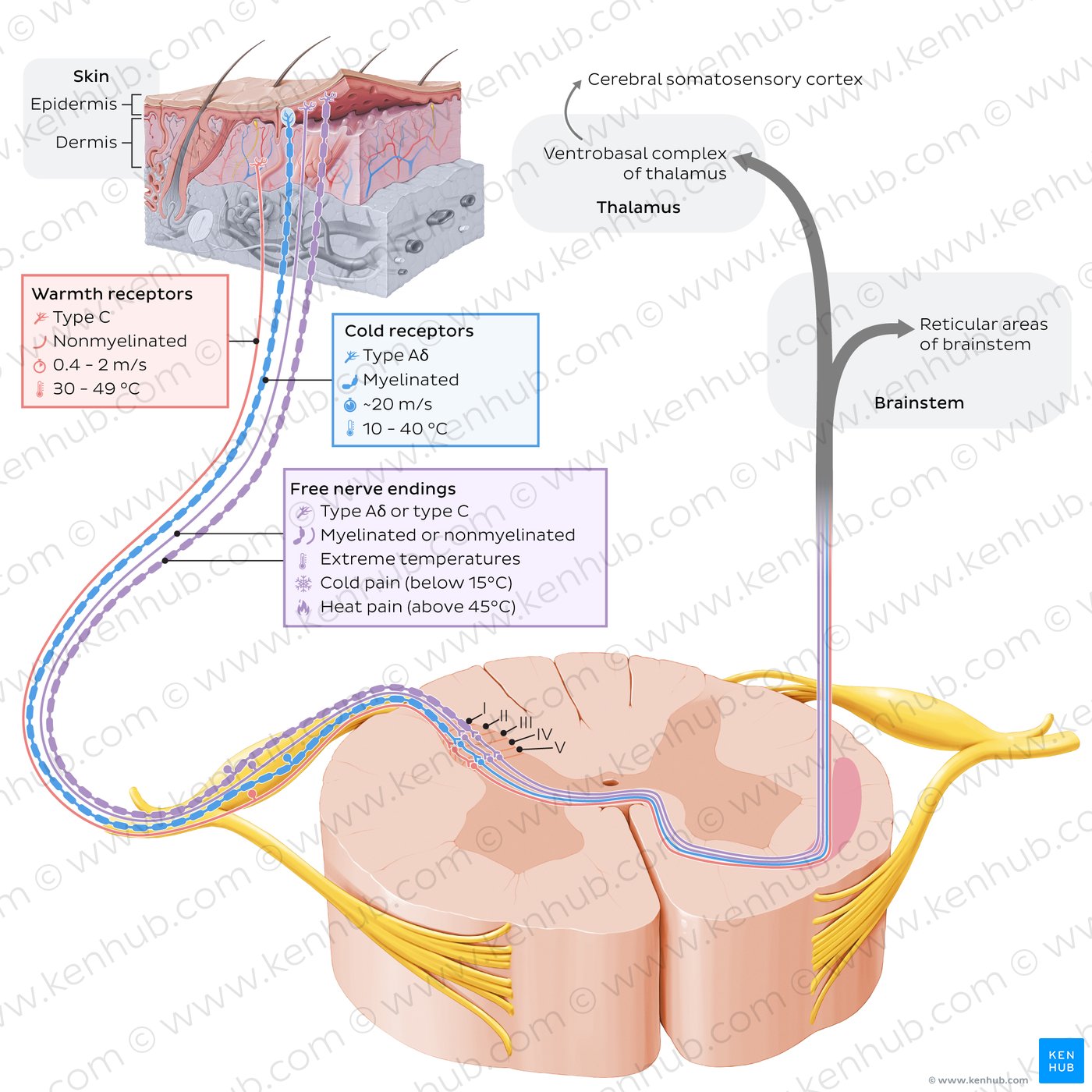
Proprioceptors
Stimulated by mechanical stretch or tension in muscles, tendons, and joints. General sense (proprioception)
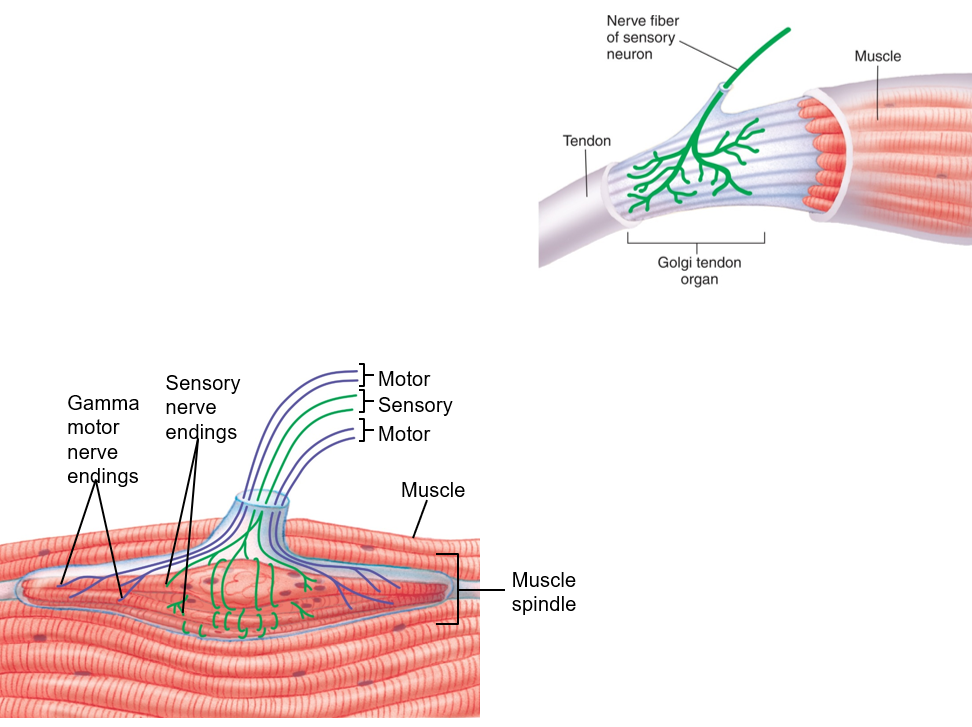
Nociceptors
Stimulated by pain. General sense (pain)
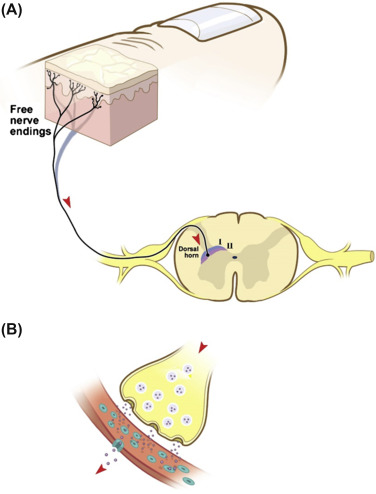
Mechanoreceptors
Stimulated by pressure or stretch. General sense (touch, pressure, vibration, proprioception)
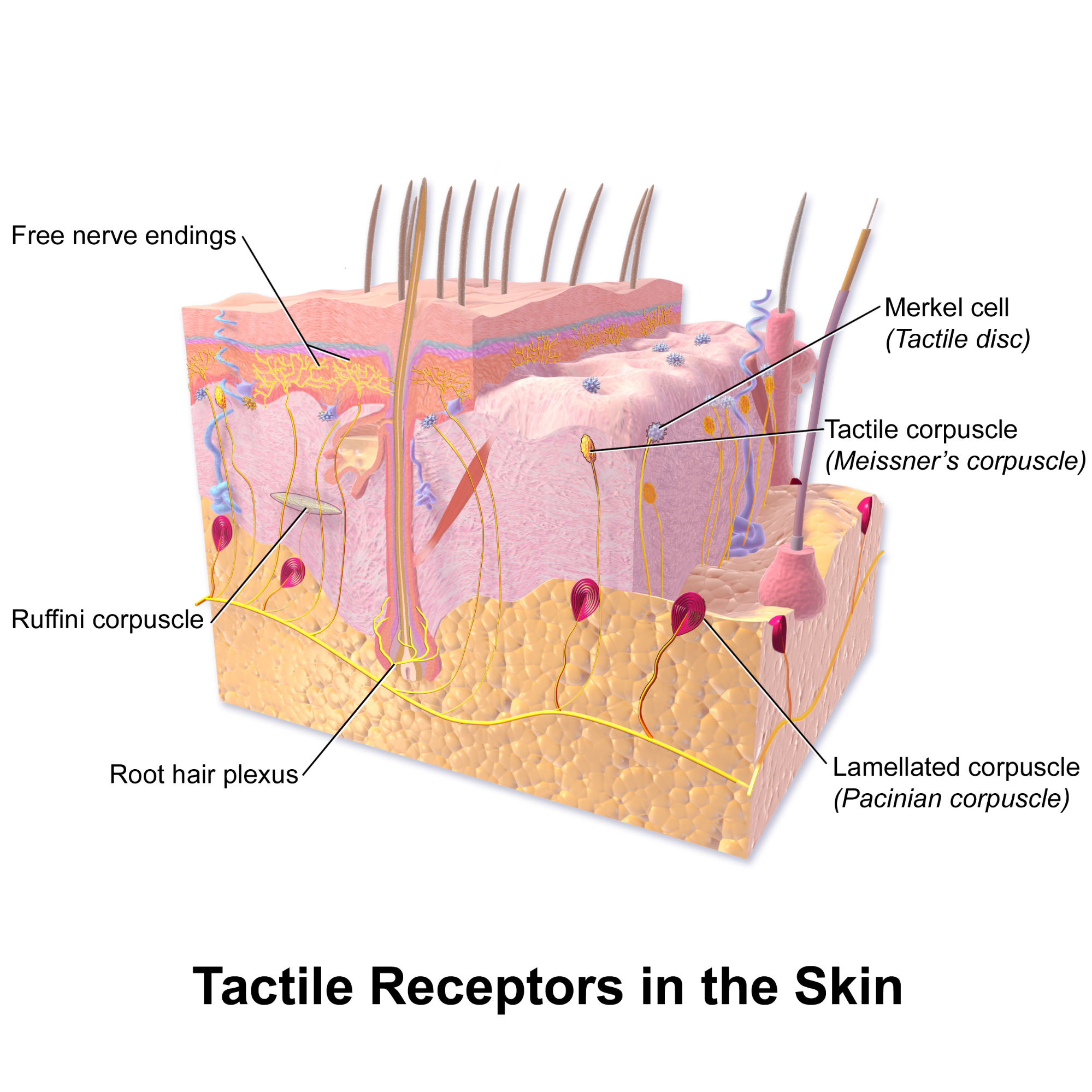
Free Nerve Ending
Stimulated by temperature, pain, light touch
Warm receptors, cold receptors, nociceptors (pain)
General sense

Meissner corpuscles
Stimulated by light touch, texture perception, 2-point discrimination. General sense (fine touch)
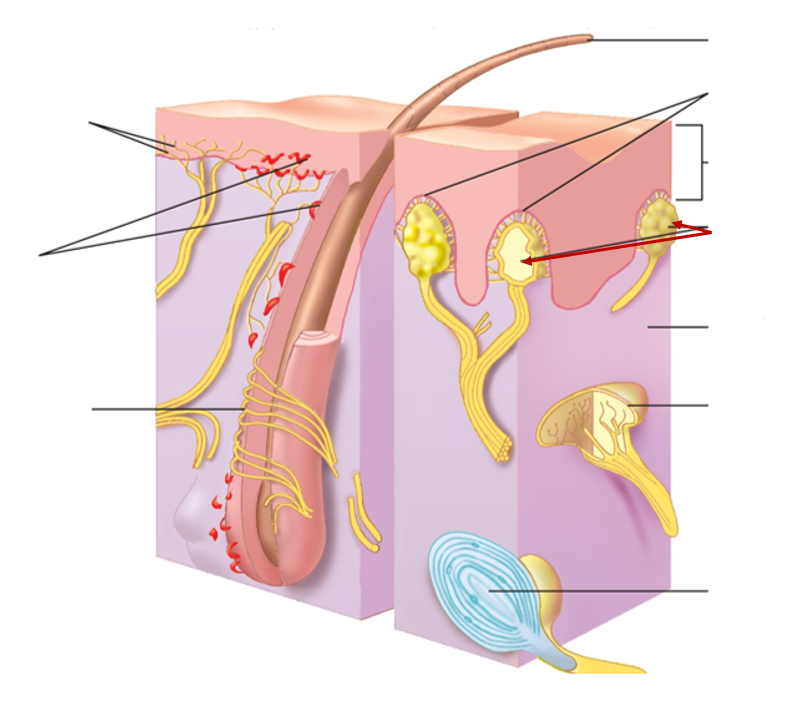
Merkel discs
Stimulated by light touch and pressure. General sense (fine touch)
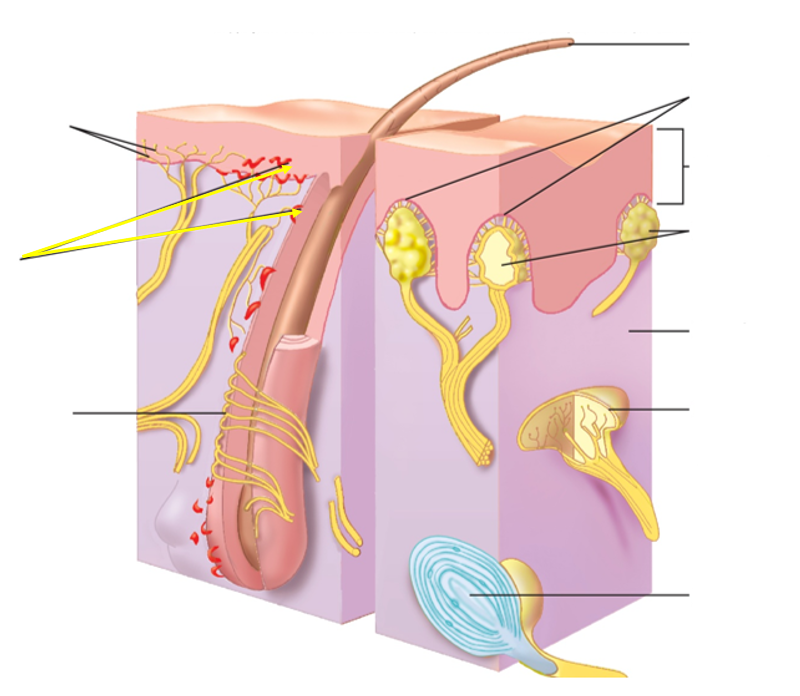
Pacinian corpuscles
Stimulated by deep pressure, stretch, tickle, and vibration (texture). General sense (pressure, vibration)
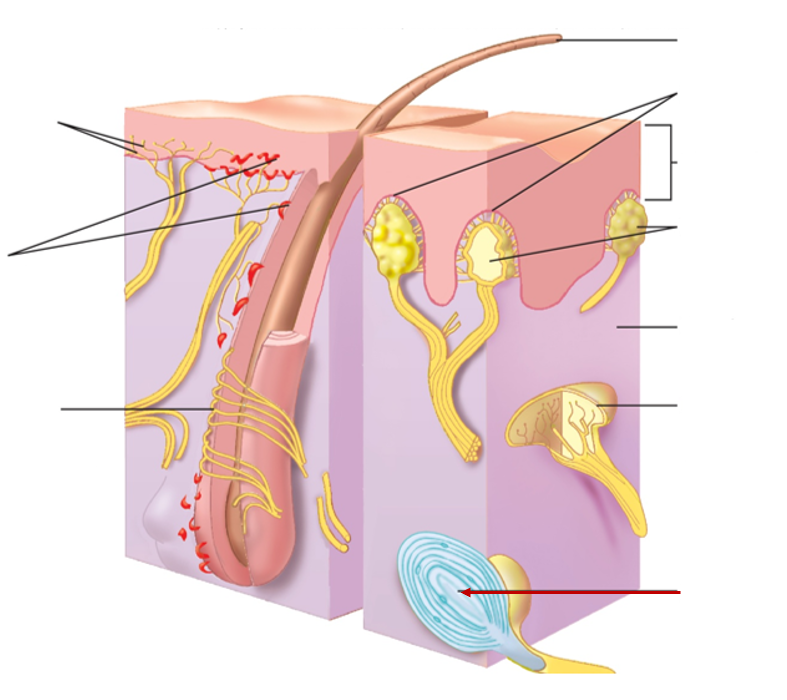
Baroreceptors
Stimulated by stretch (of blood vessels). General sense (blood pressure regulation)
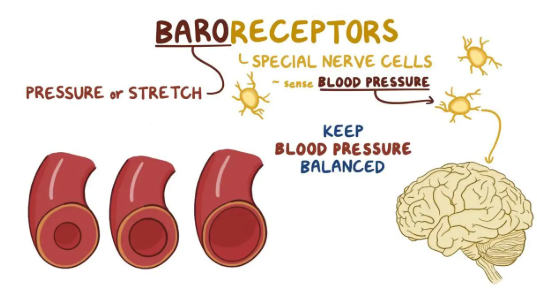
Chemoreceptors
Stimulated by chemicals (oxygen, CO2, pH, smell, taste). Special sense (smell, taste) and general sense (blood chemistry)
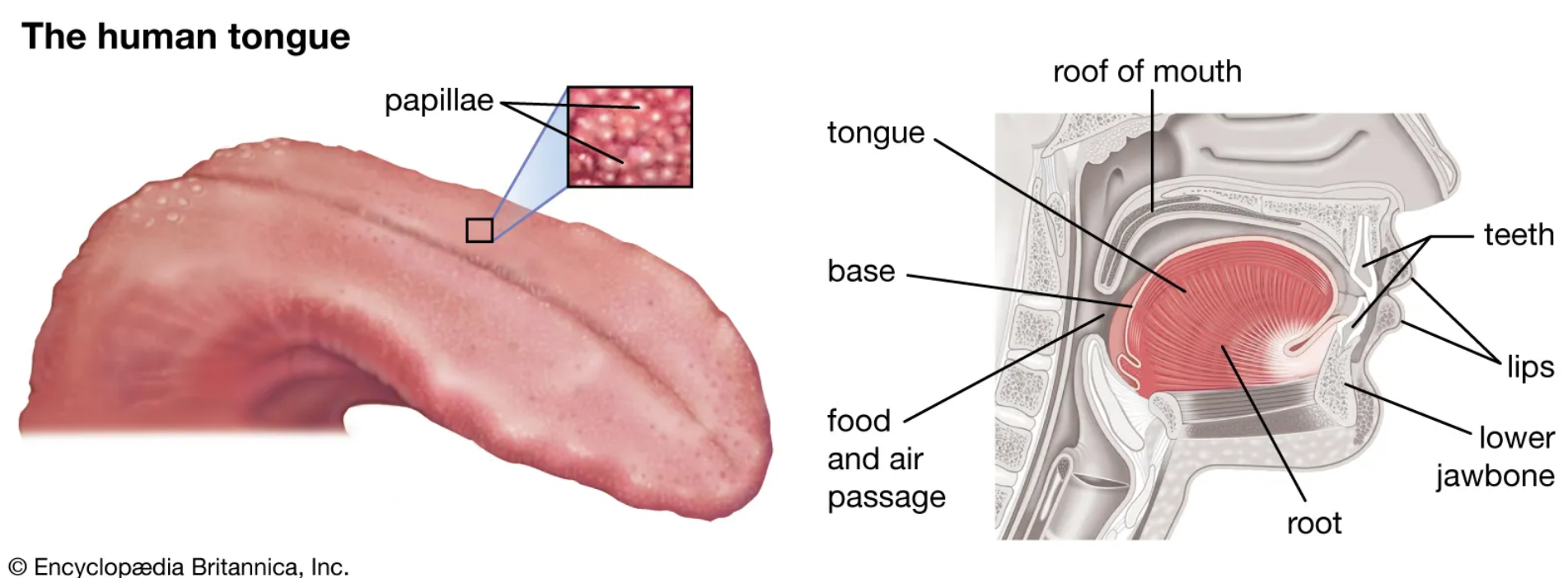
Taste bud

Taste pore
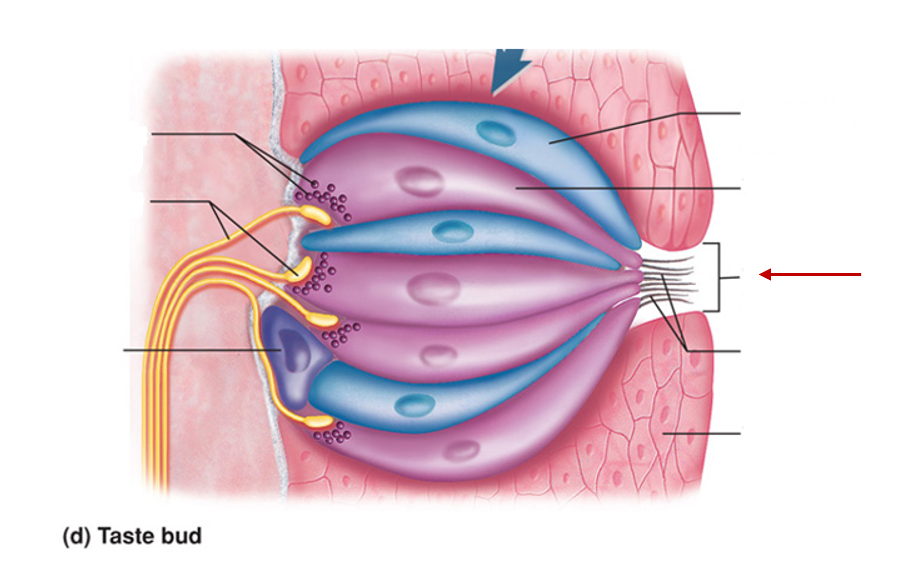
Taste cell
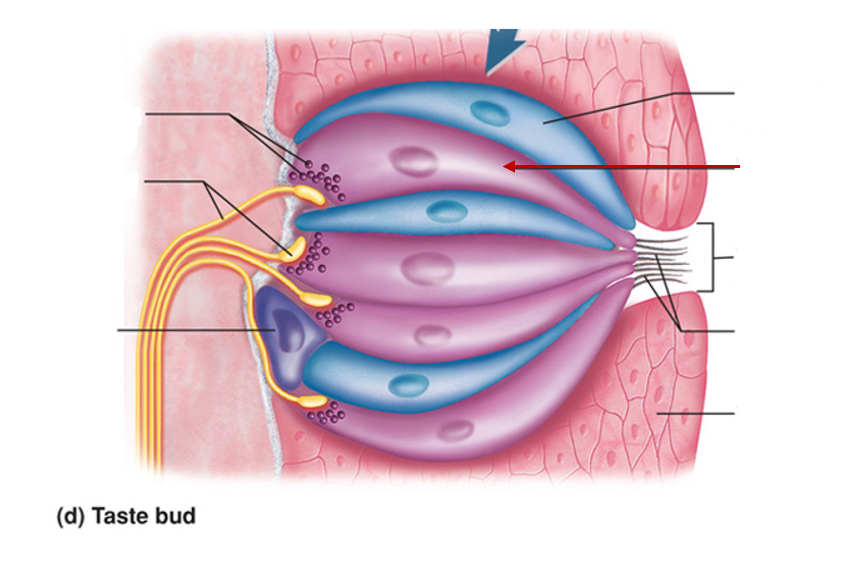
Supporting cell
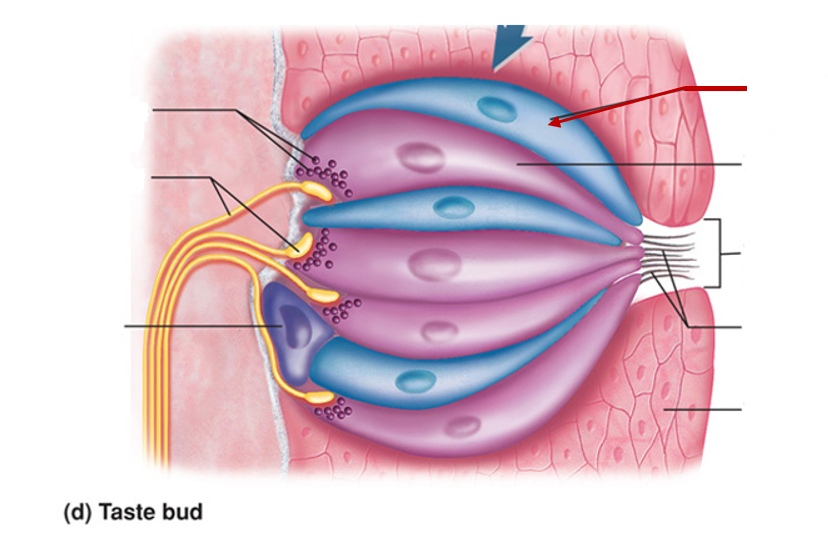
Gustatory hair
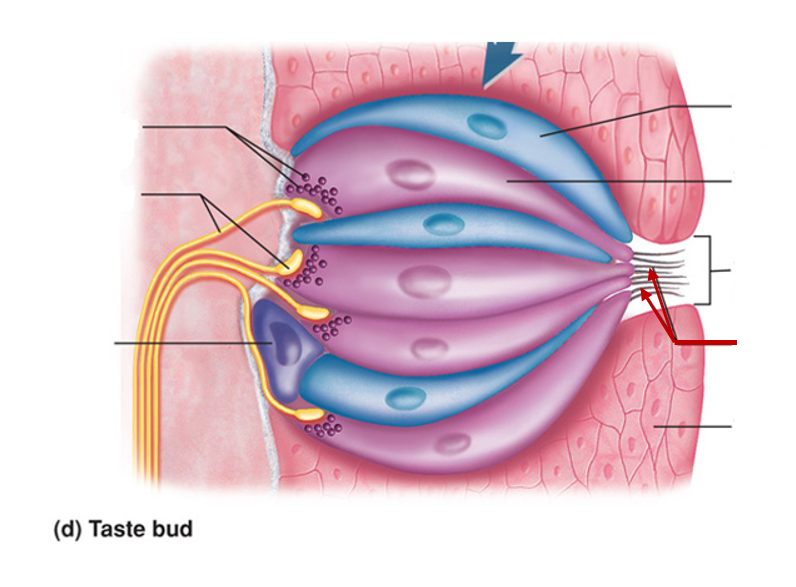
Olfactory tract
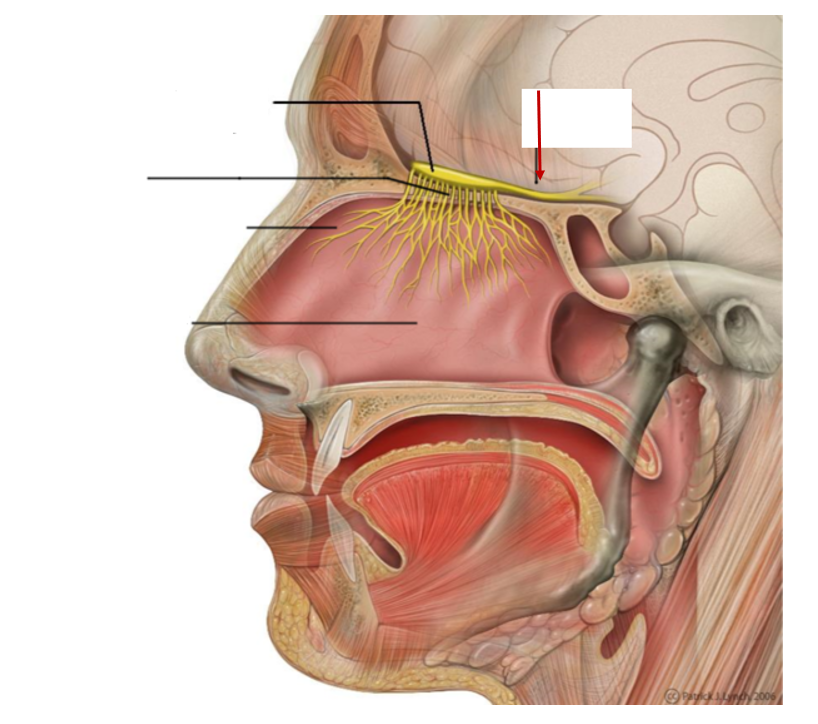
Olfactory bulb
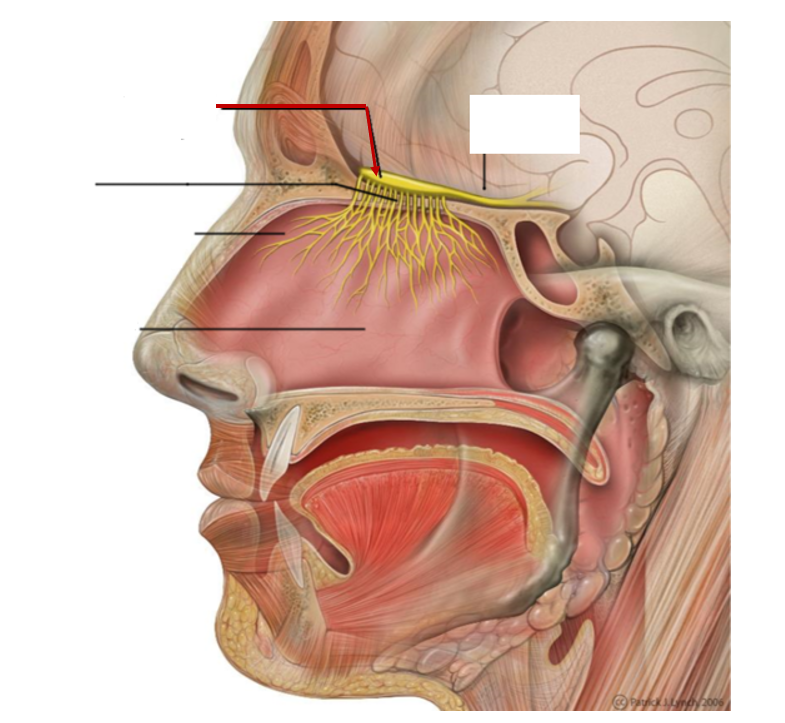
Olfactory nerve
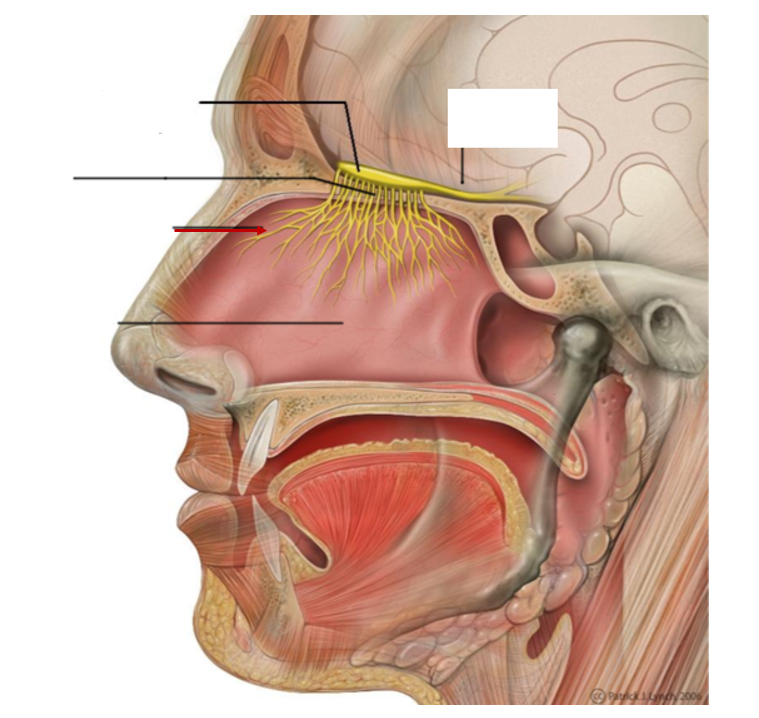
Ethmoid bone
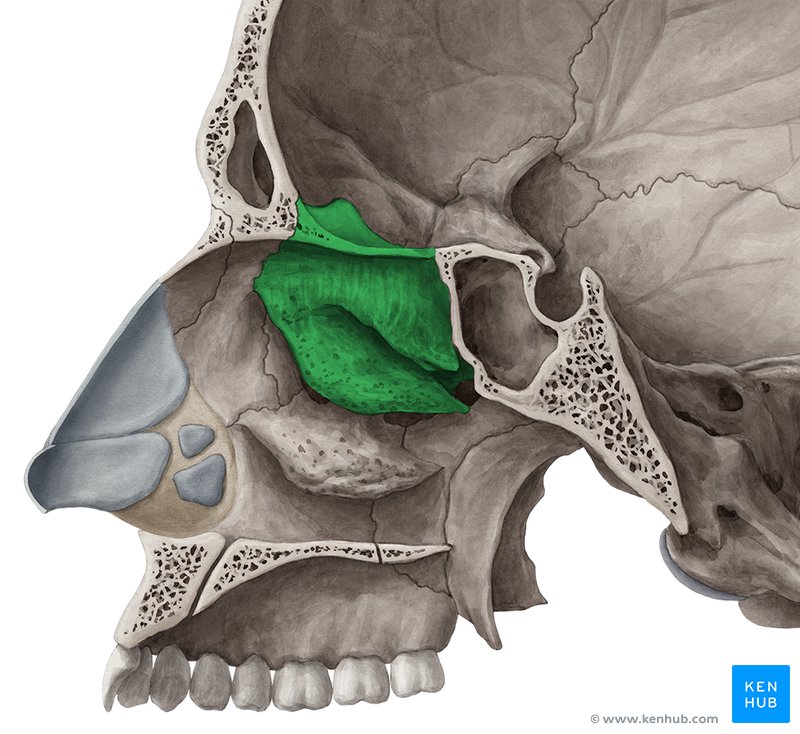
Cribriform plate
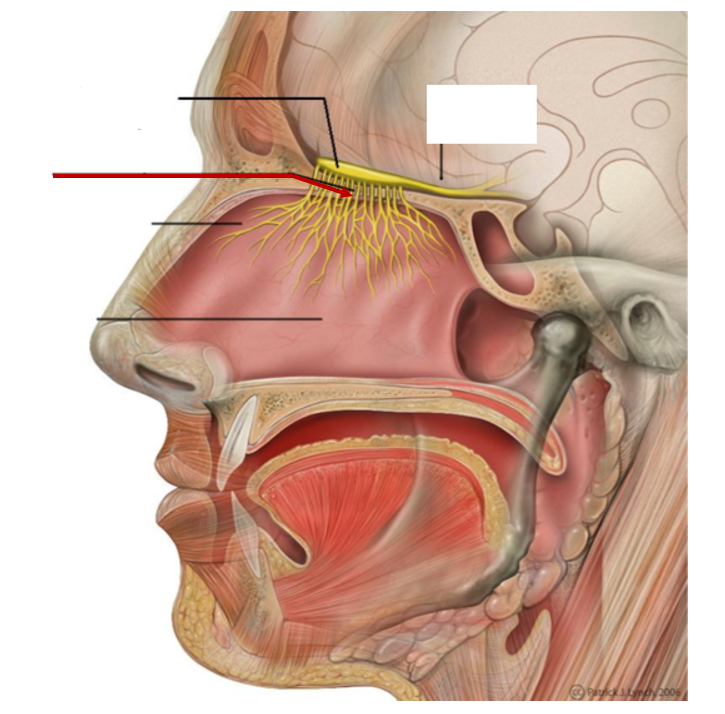
Superior rectus
CN III (oculomotor nerve), moves gaze up
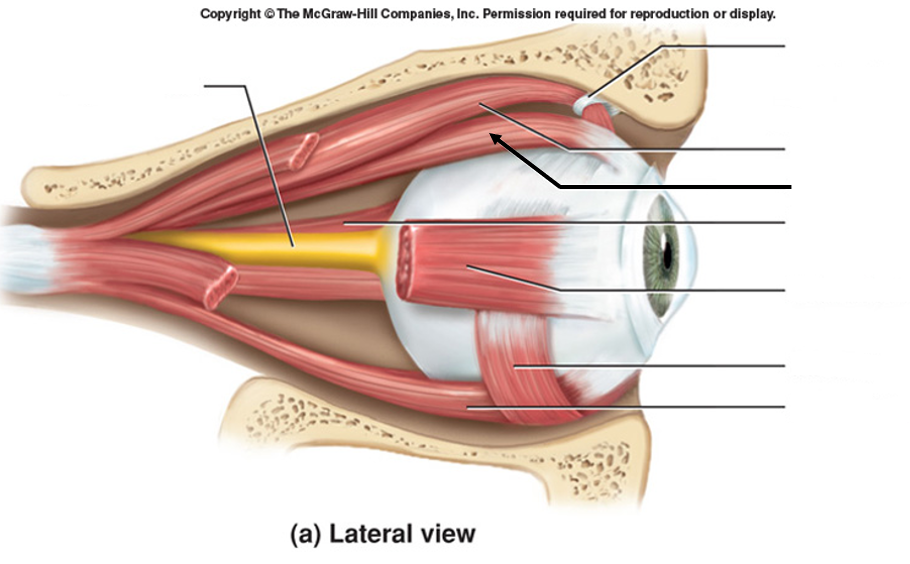
Inferior rectus
CN III (oculomotor nerve), moves gaze down
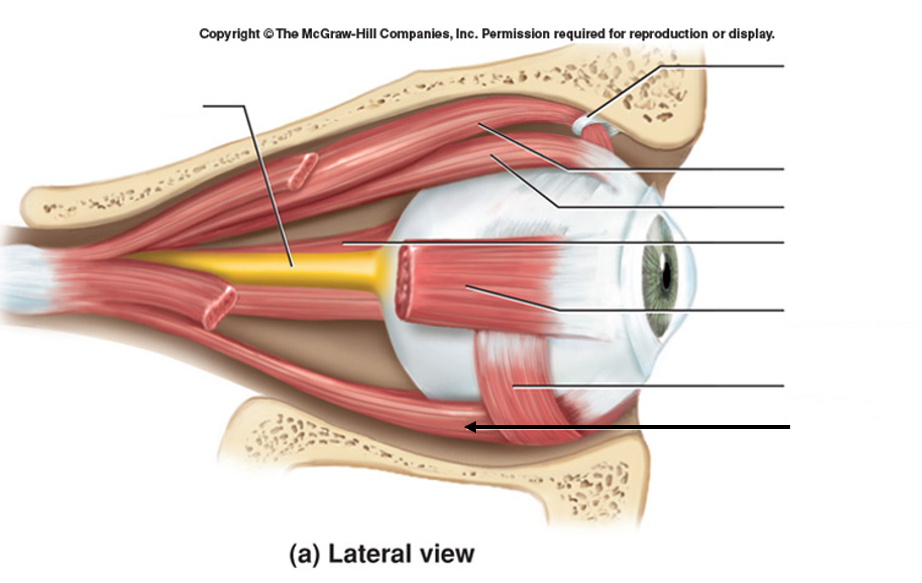
Medial rectus
CN VI (abducens nerve), moves gaze medially
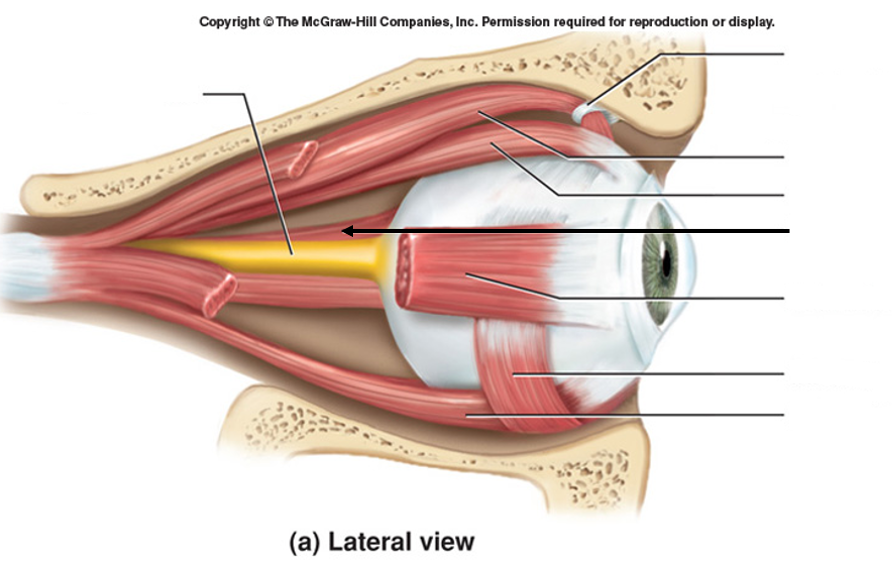
Lateral rectus
CN III (oculomotor nerve), moves gaze laterally
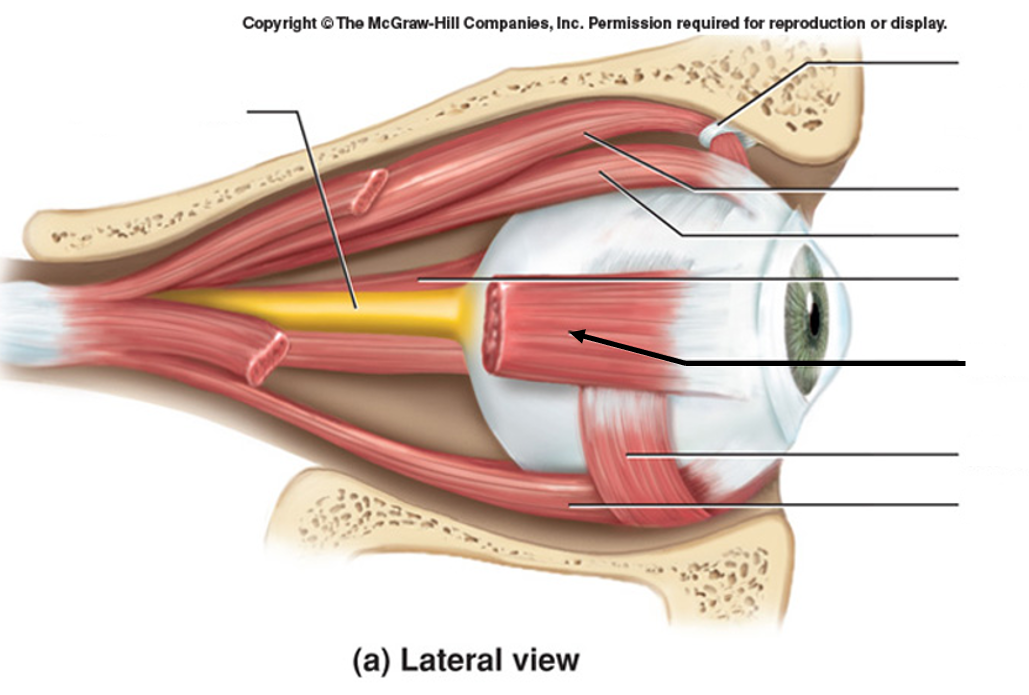
Superior oblique
CN IV (trochlear nerve), internally rotates the eye
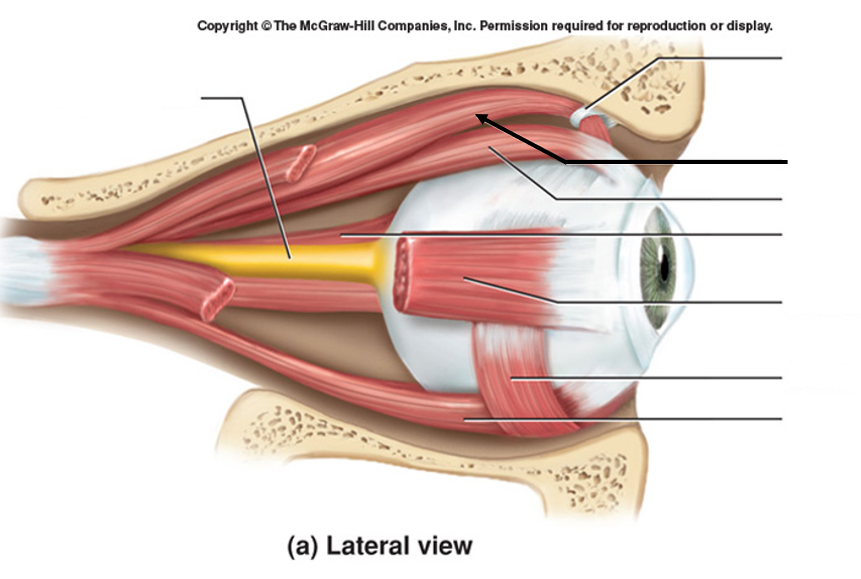
Inferior oblique
CN III (oculomotor nerve), externally rotates the eye
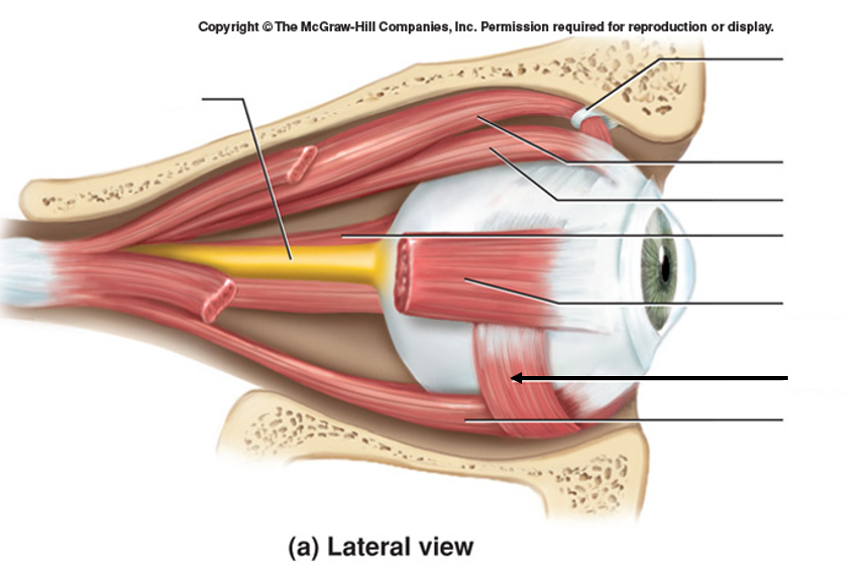
Conjunctiva

Palpebrae
Eyelids - palpebral fissure, eyelashes
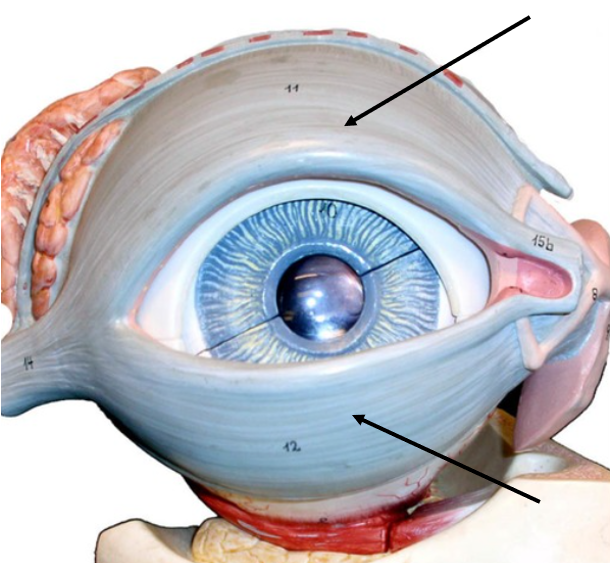
Lacrimal gland
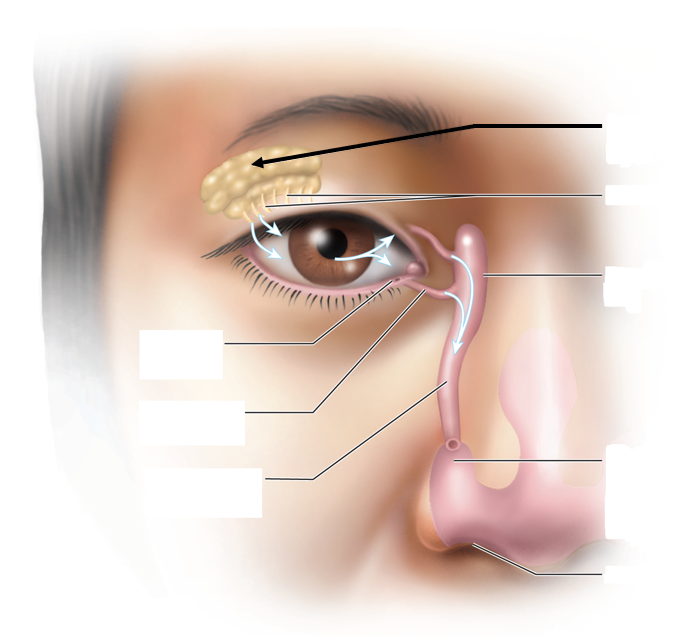
Lacrimal canal
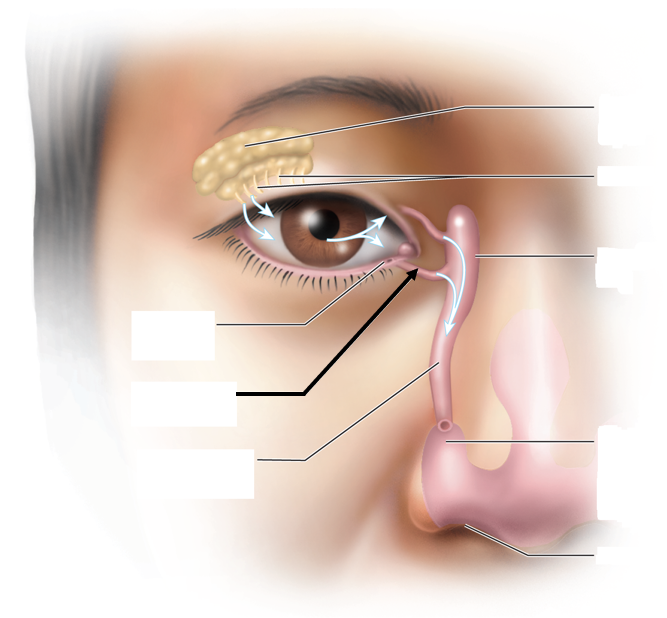
Cornea
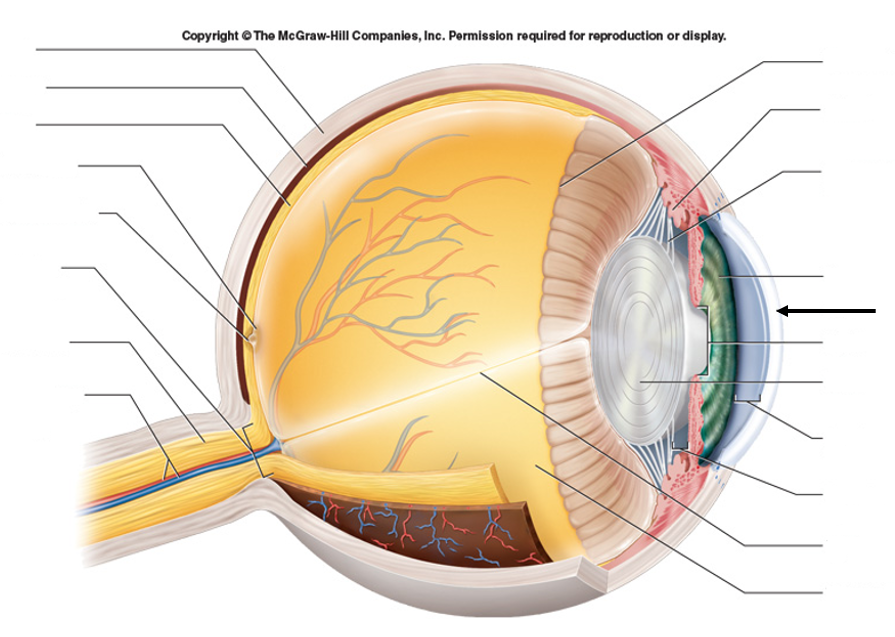
Sclera
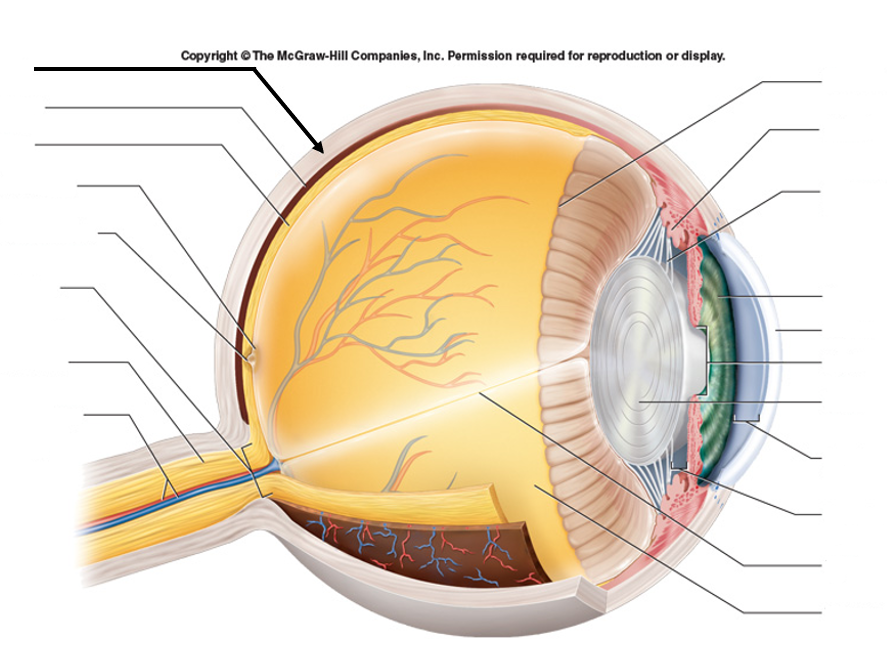
Anterior chamber
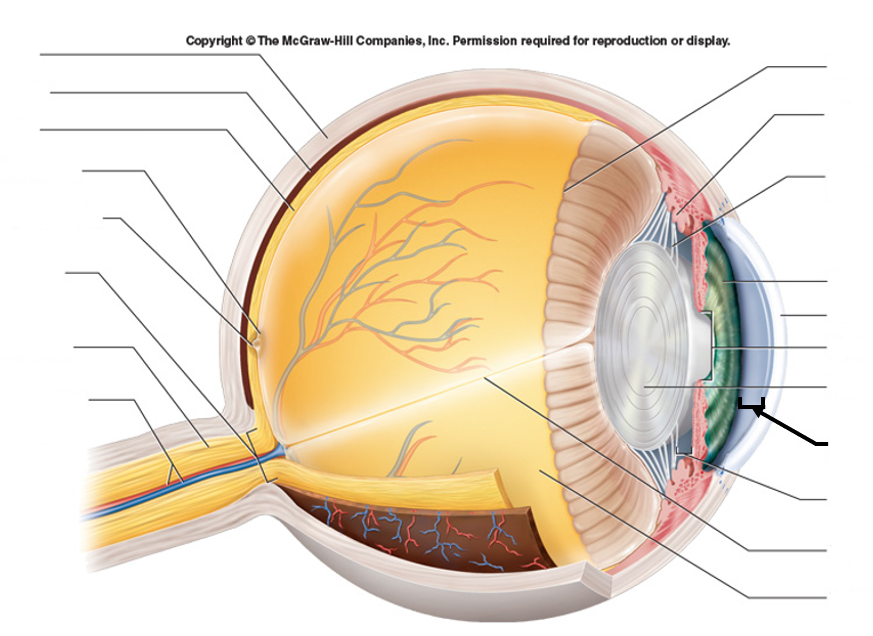
Posterior chamber

Aqueous humor
Posterior chamber - from lens to iris
Anterior chamber - from iris to cornea
Blue arrows
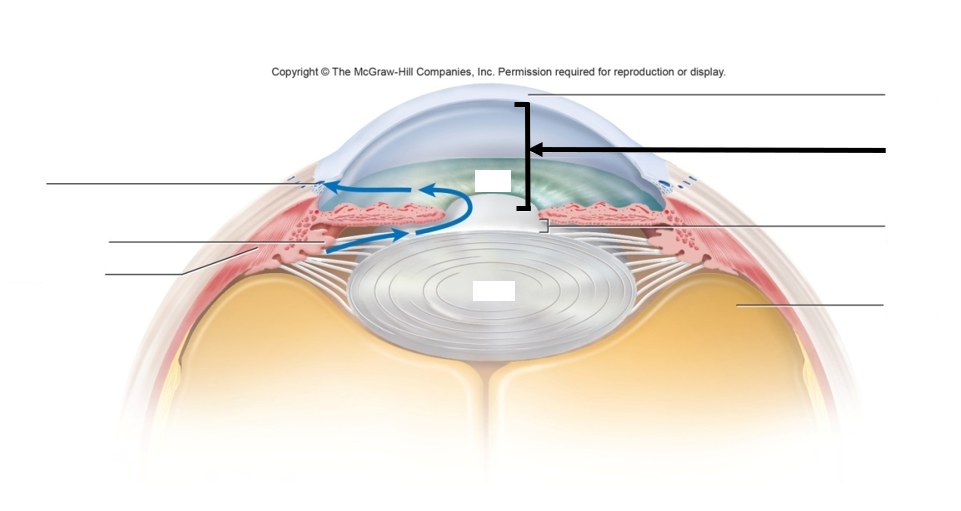
Iris
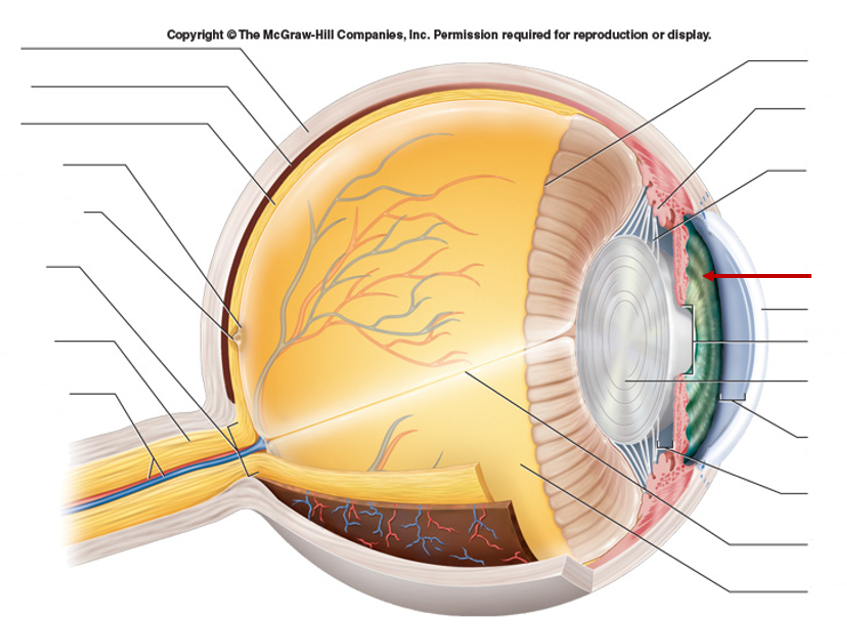
Pupil
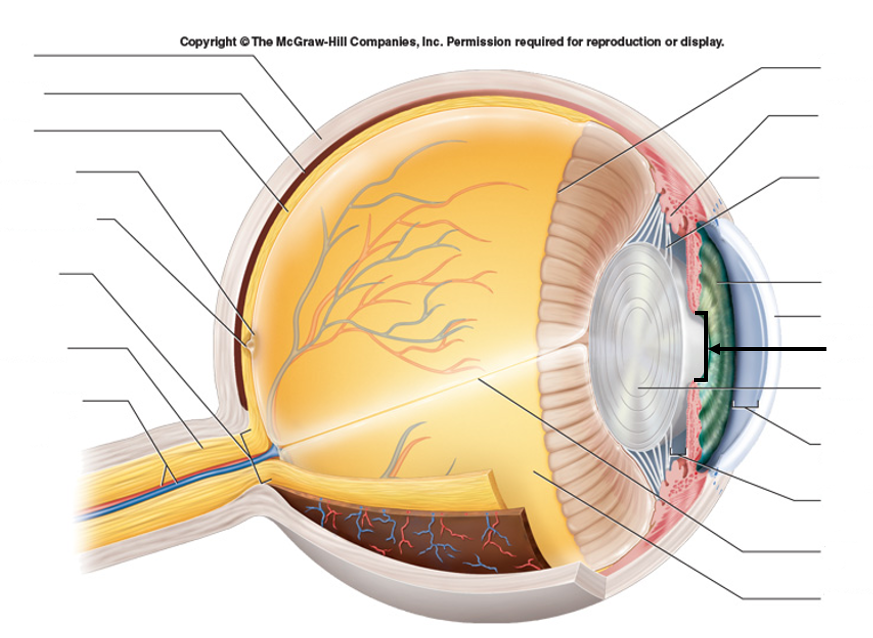
Lens
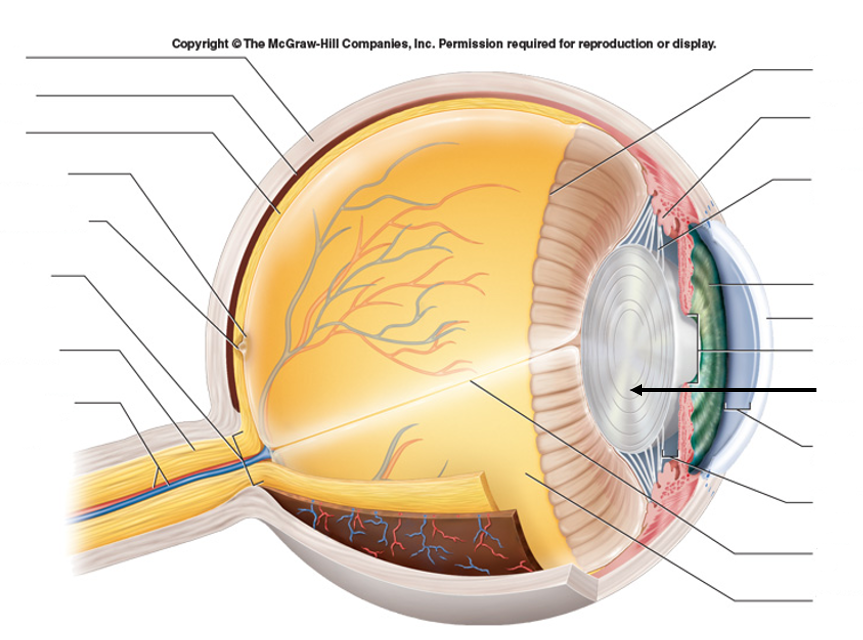
Suspensory ligaments
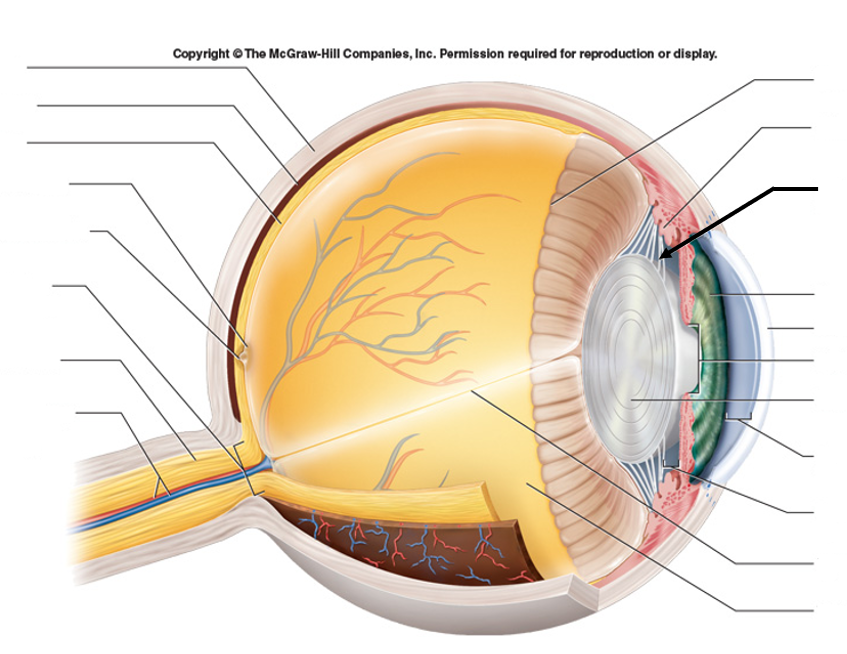
Ciliary body
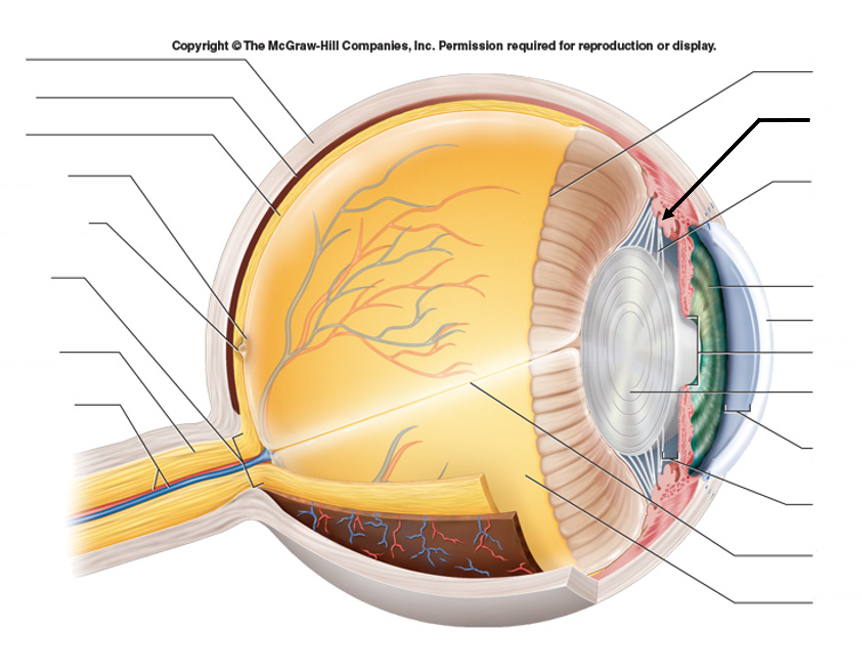
Vitreous chamber
Behind lens, in vitreous humor
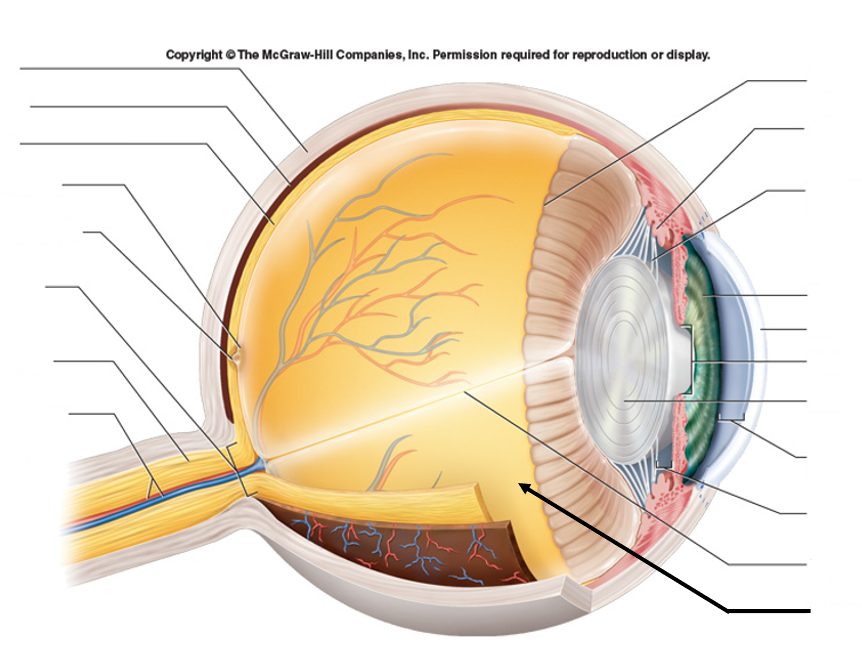
Vitreous humor
Contains vitreous chamber
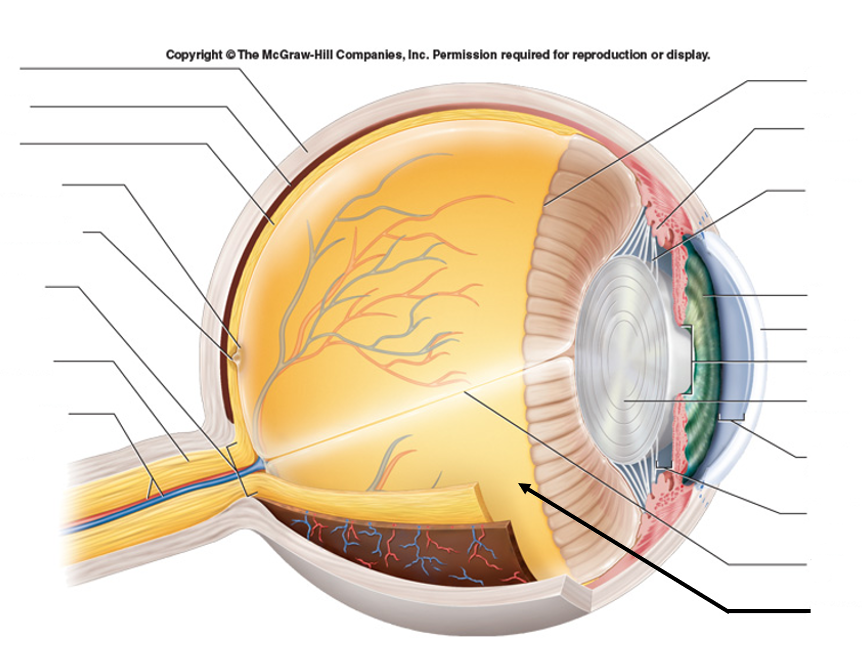
Choroid
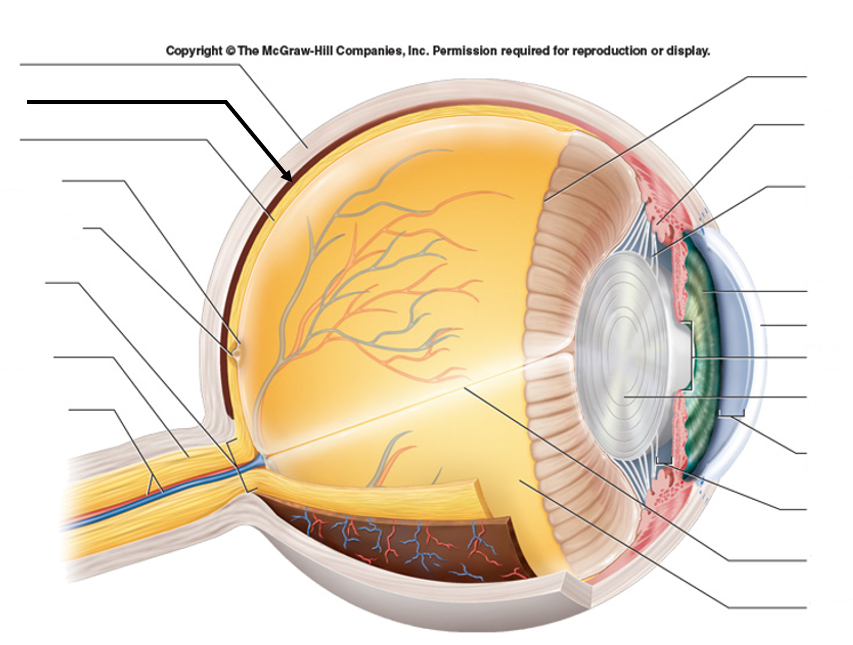
Retina
Lines posterior two-thirds of eye, photoreception
Entire nervous tunic
Contains photoreceptors (rods and cones), converts light into electrical signals
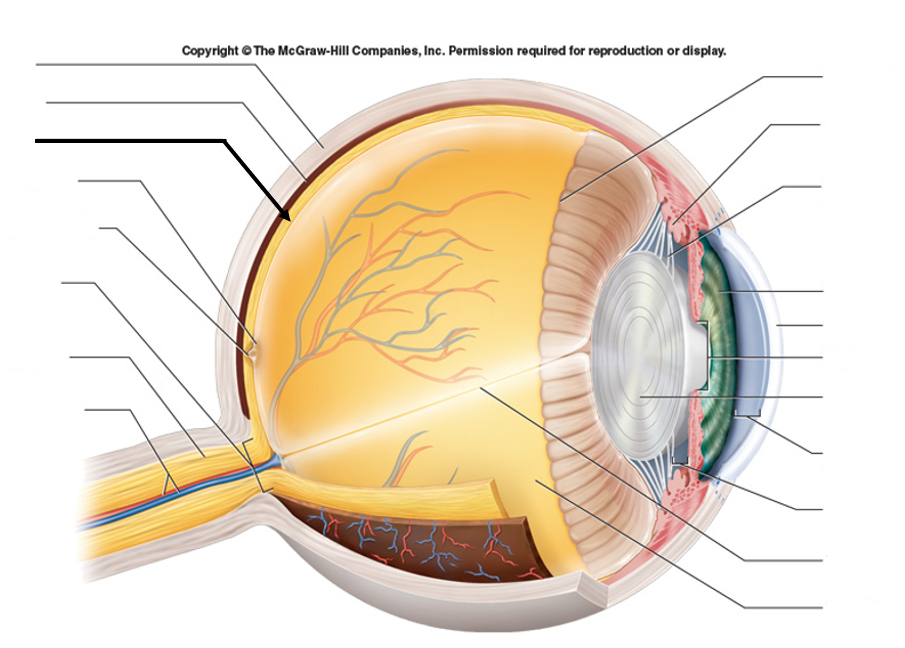
Macula Lutea
Central patch for detailed vision
Center of retina, sharp central vision
High concentration of cones
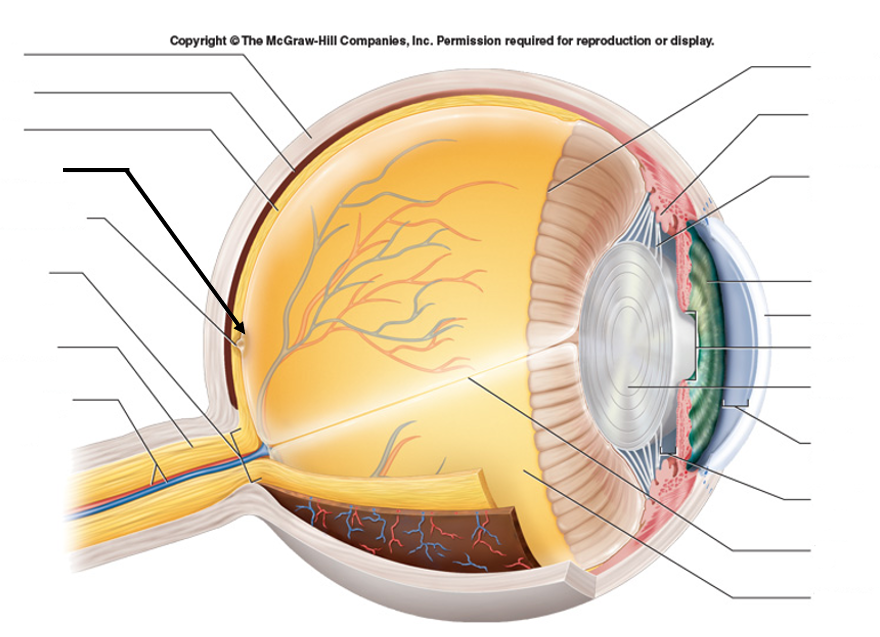
Fovea Centralis
Pit in center of macula
Highest concentration of cones, no rods
Spot of sharpest visual acuity
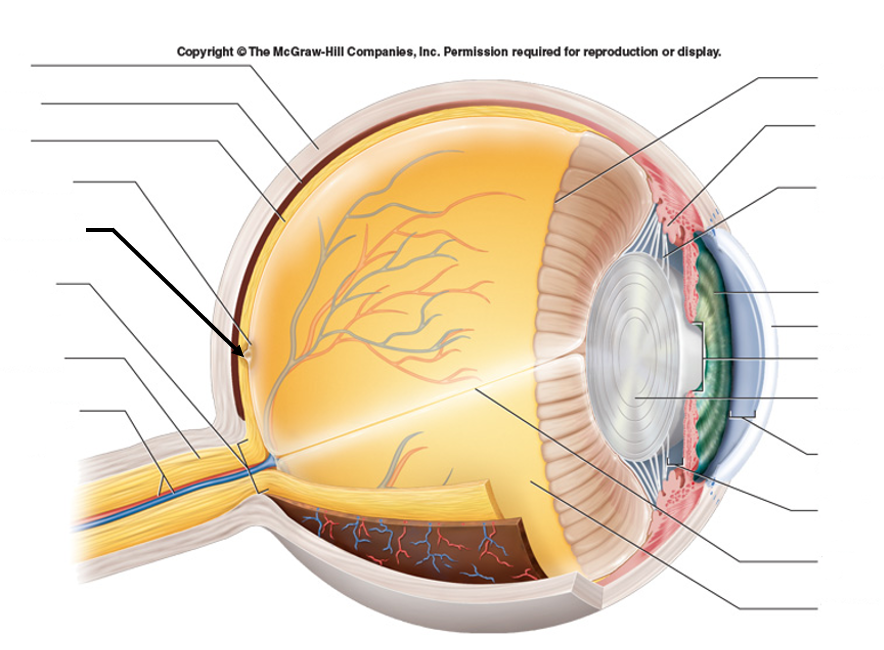
Optic disc
Blind spot without photoreceptors
Where the optic nerve exits retina
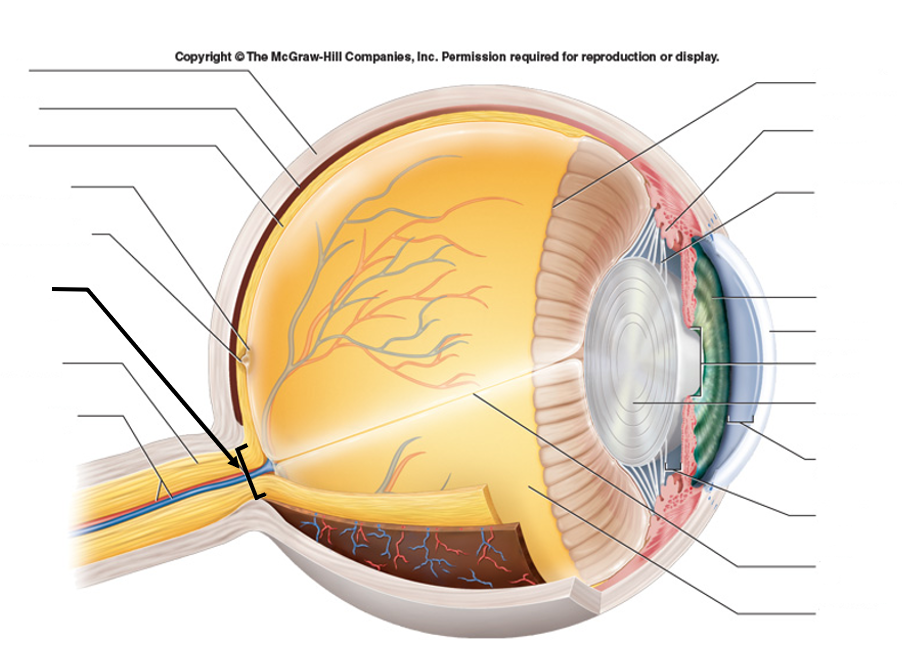
Rods
Night vision, monochromatic
Rhodopsin - pigment
Maximizes light absorption
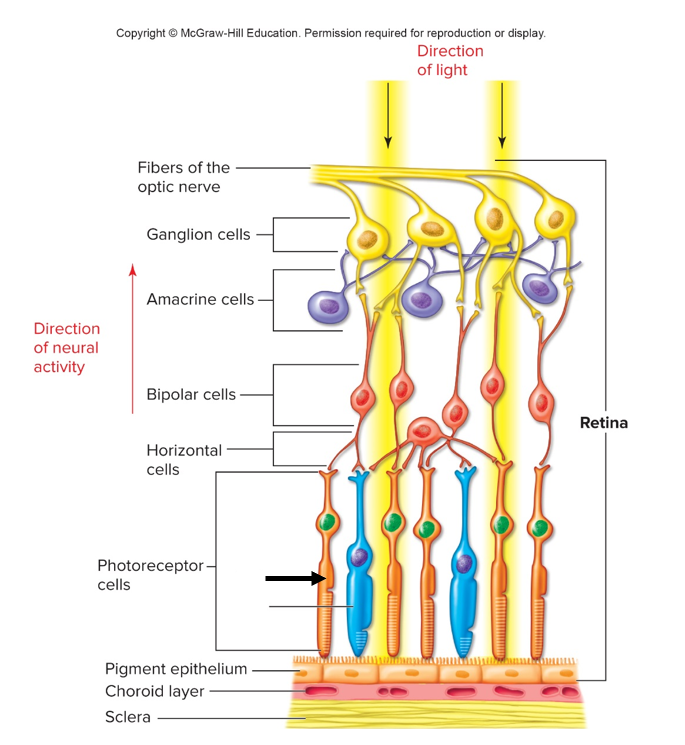
Cones
Day vision, trichromatic
Color vision
Photopsins - three different pigments
Red, green, blue
Respond to different wavelengths
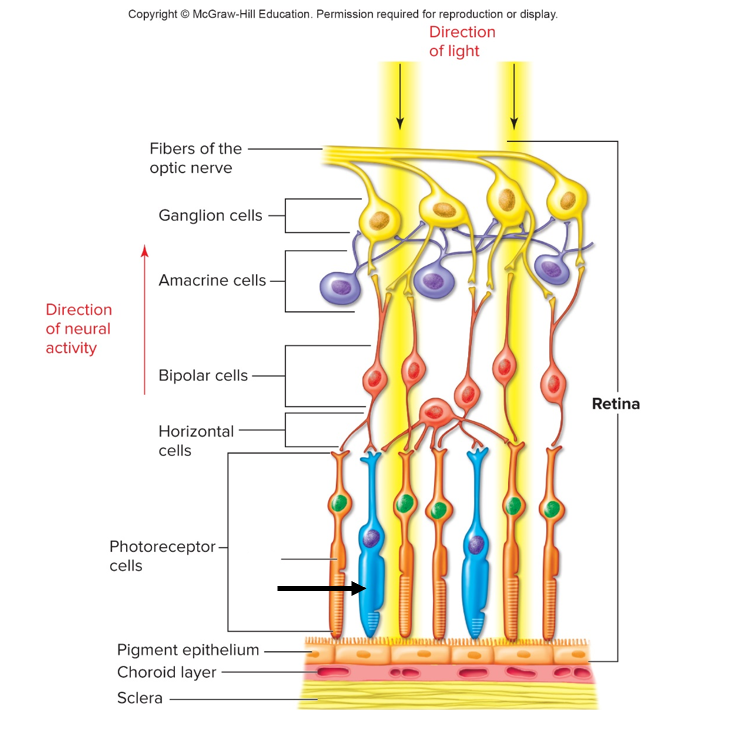
Auricle
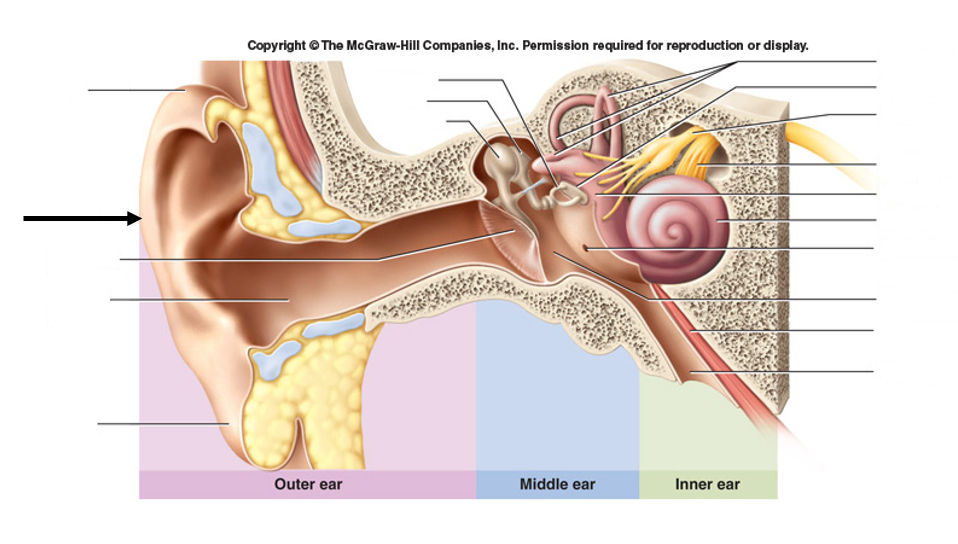
Ear lobule
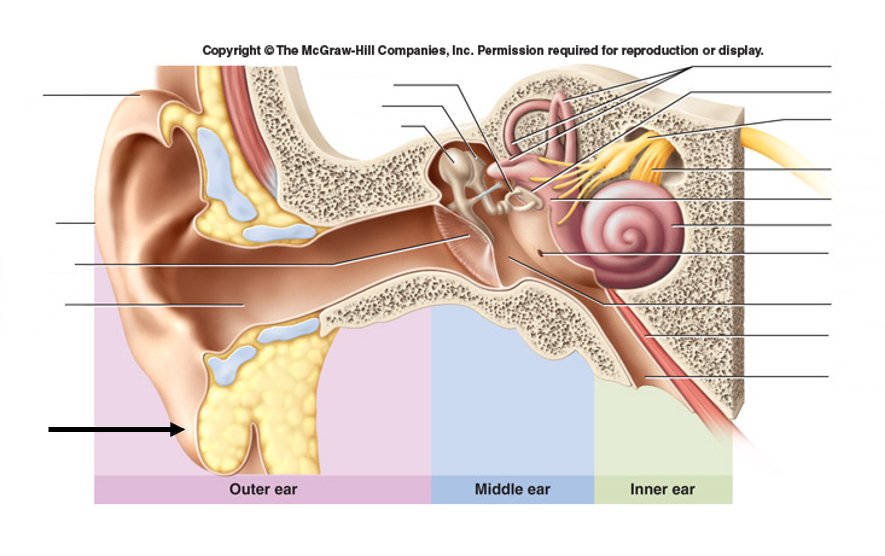
External auditory canal
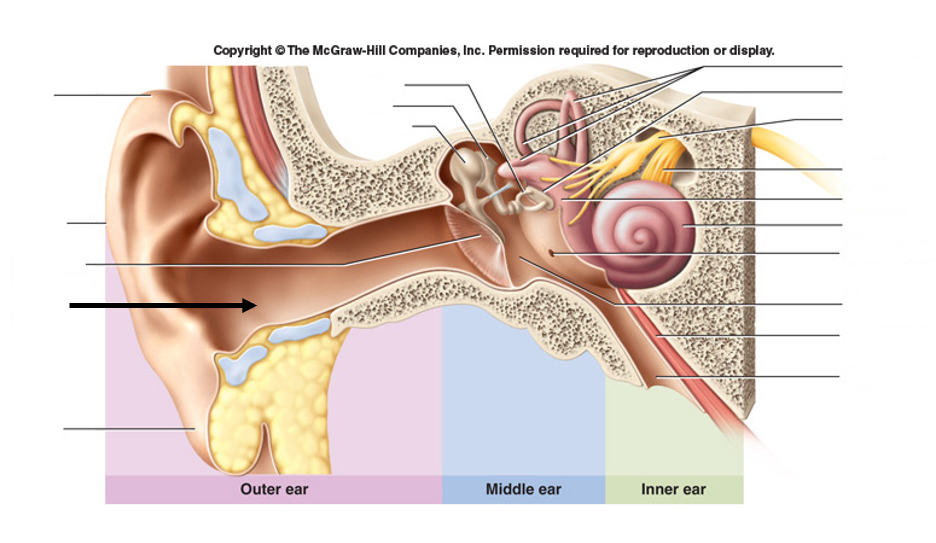
Tympanic membrane

Malleus
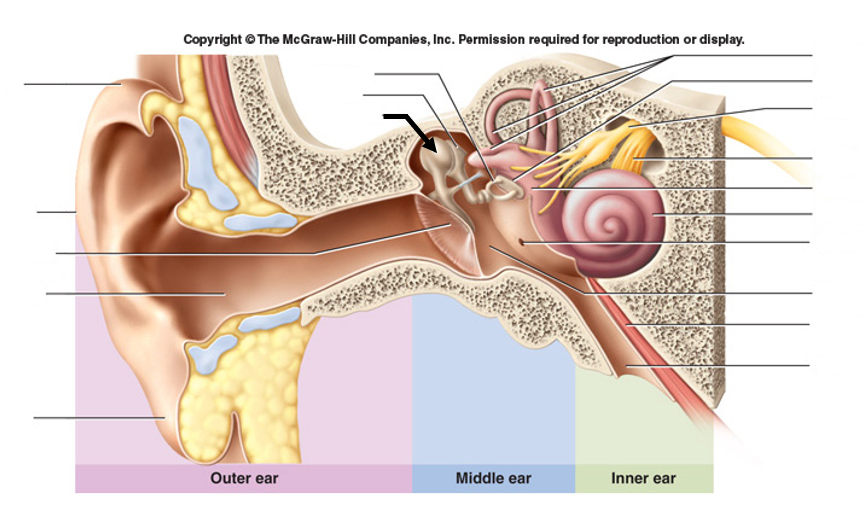
Incus
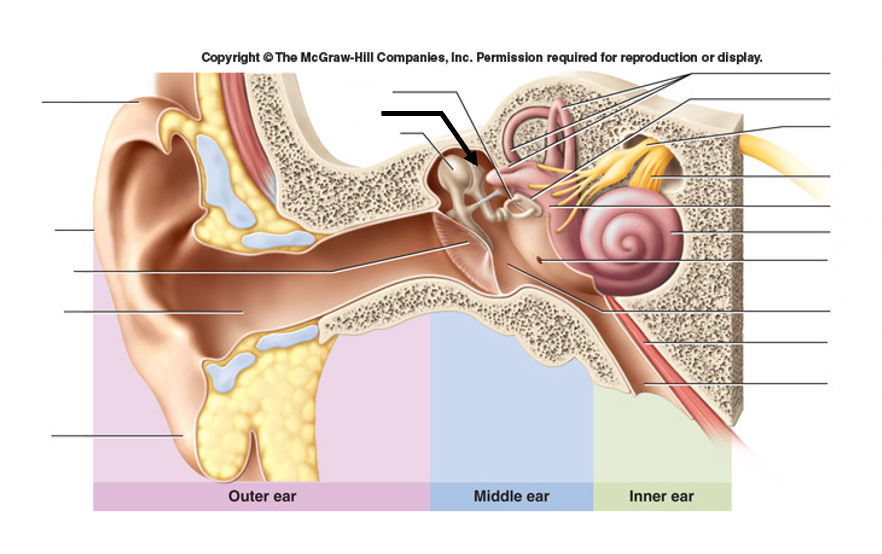
Stapes
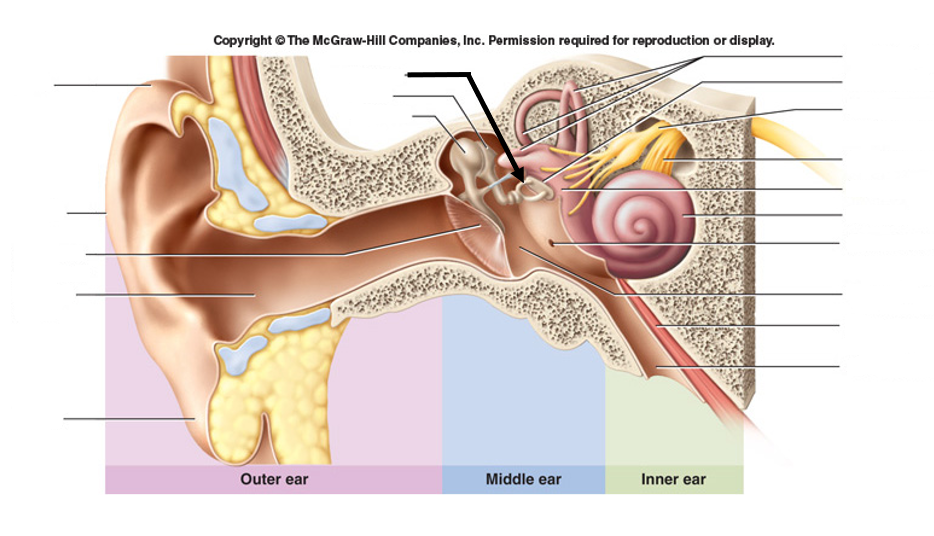
Eustacian (Auditory) Tube
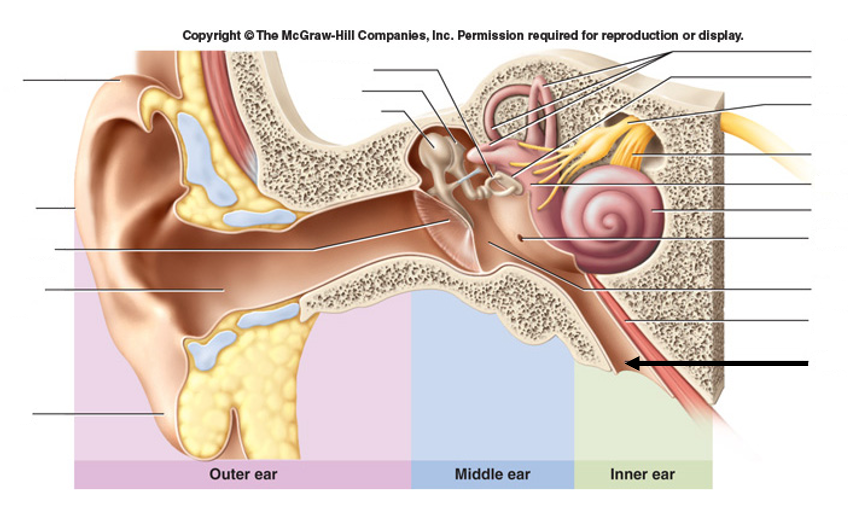
Oval window
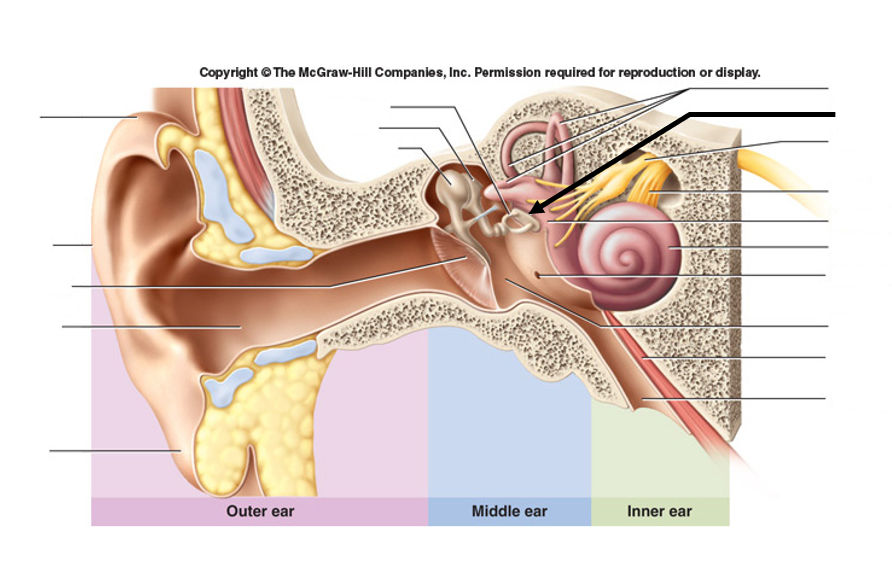
Round window
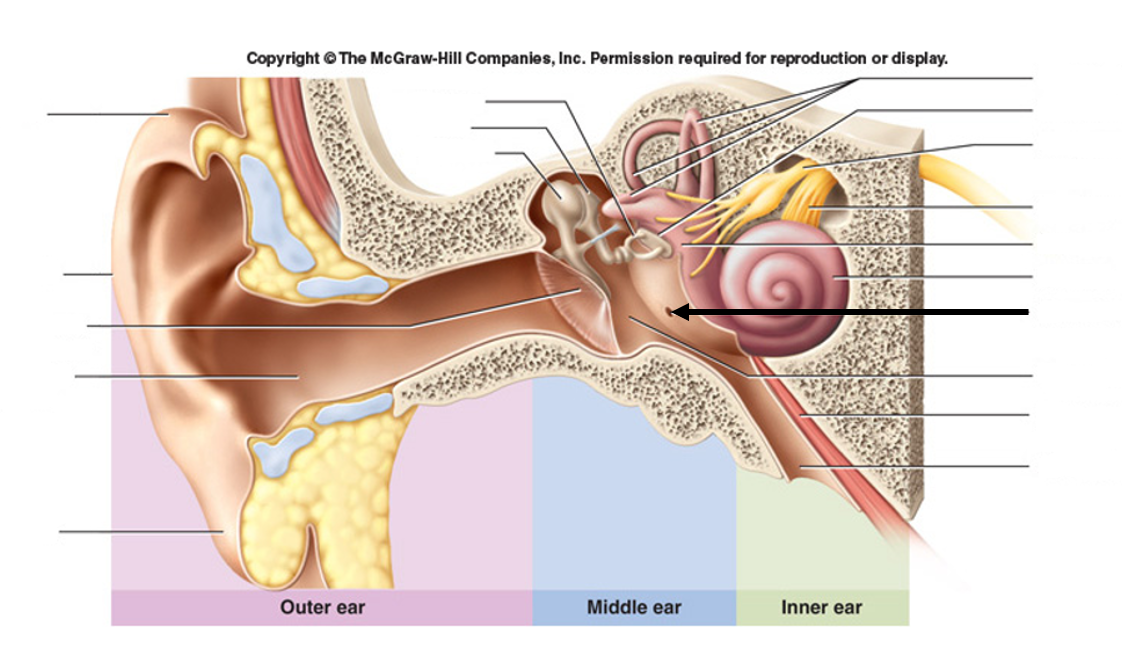
Cochlea
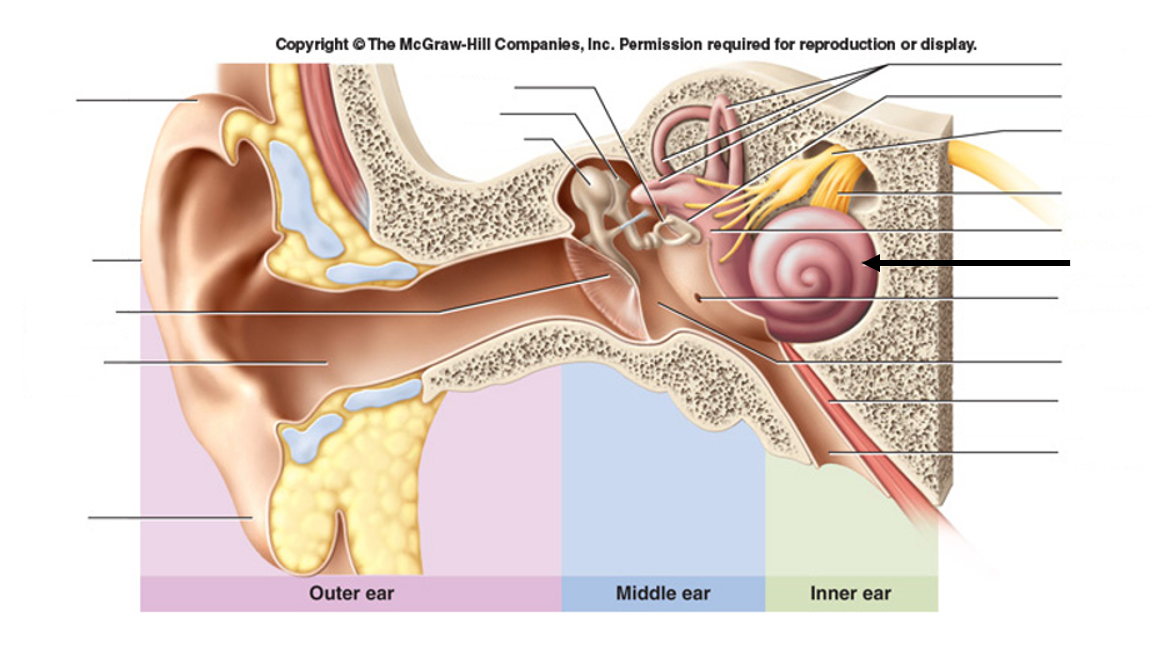
Vestibule
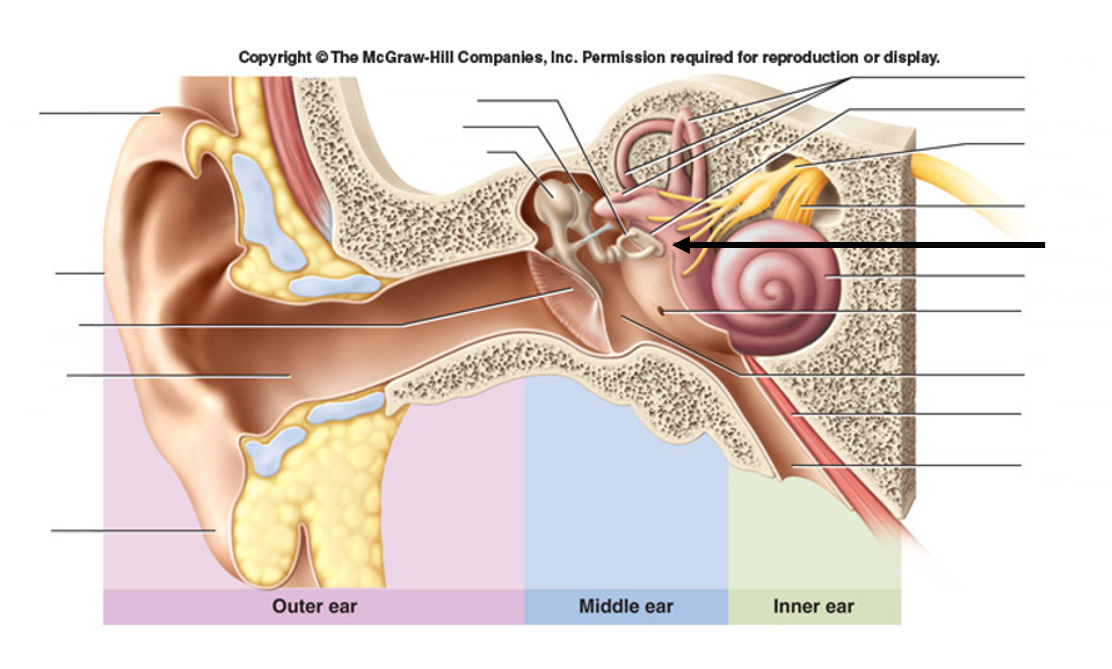
Semicircular canals
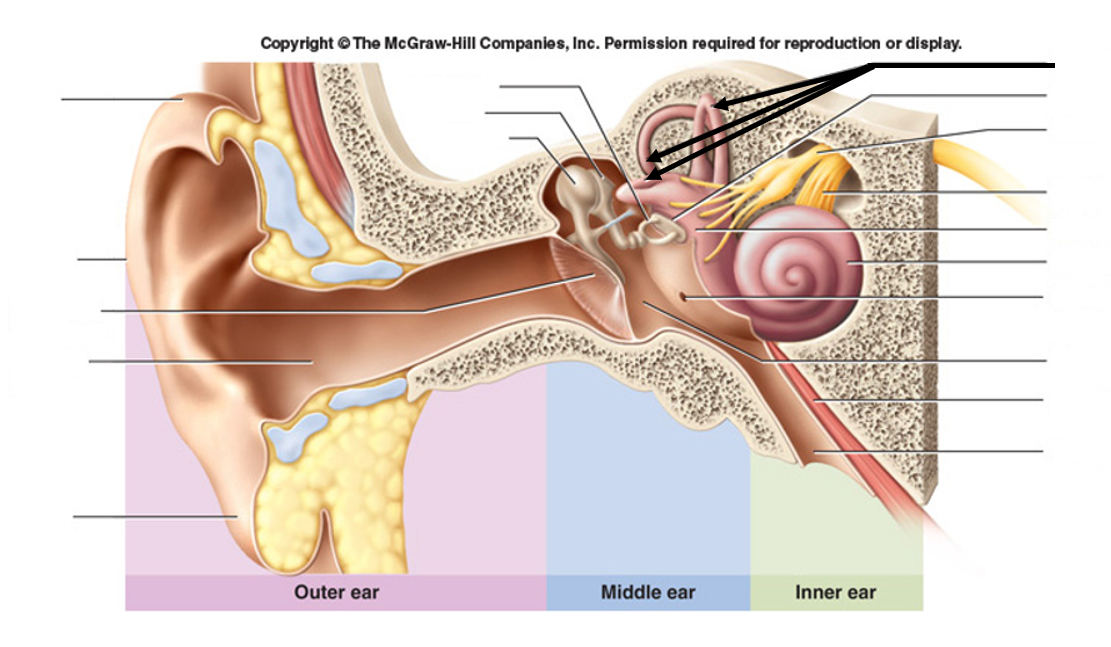
Spiral organ
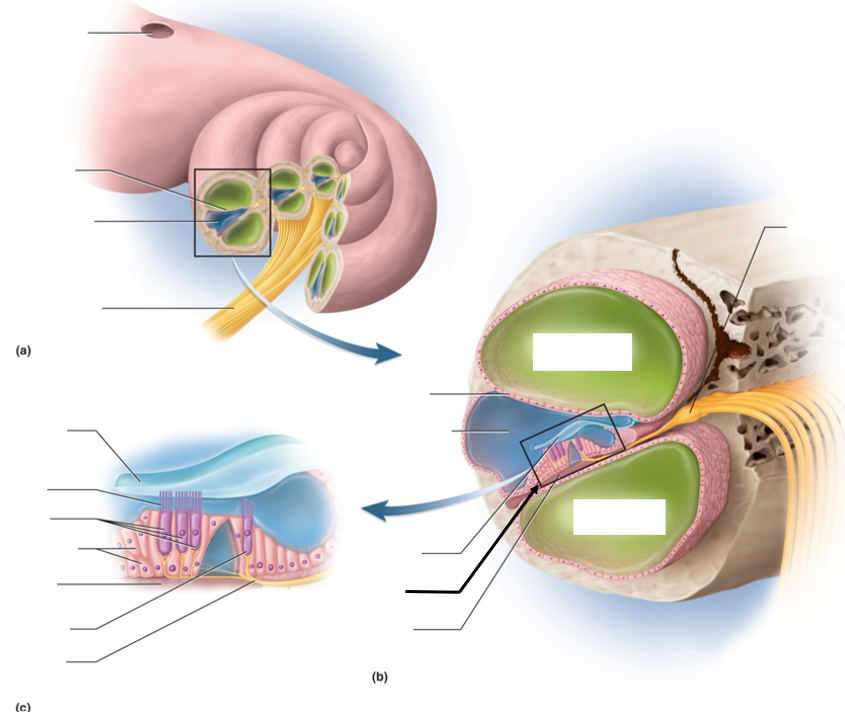
Basilar membrane

Vestibular membrane
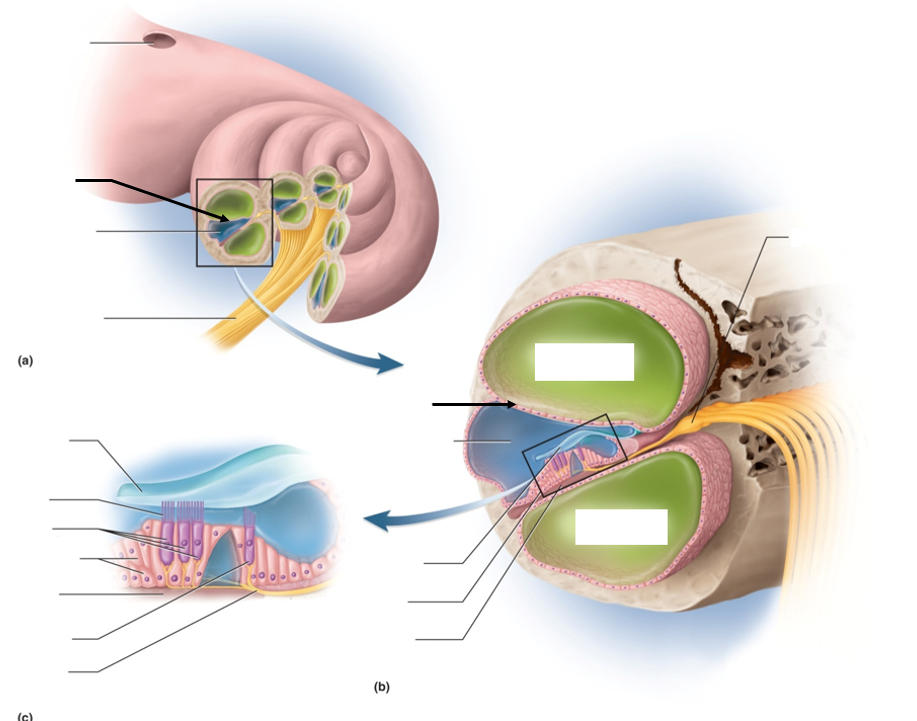
Hair cell
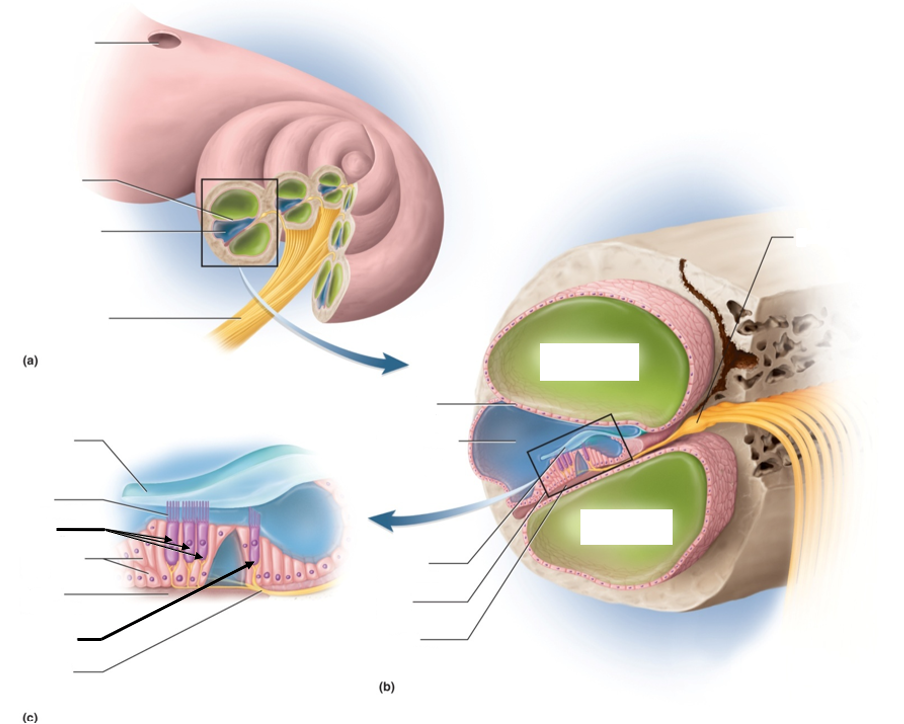
Stereocilia
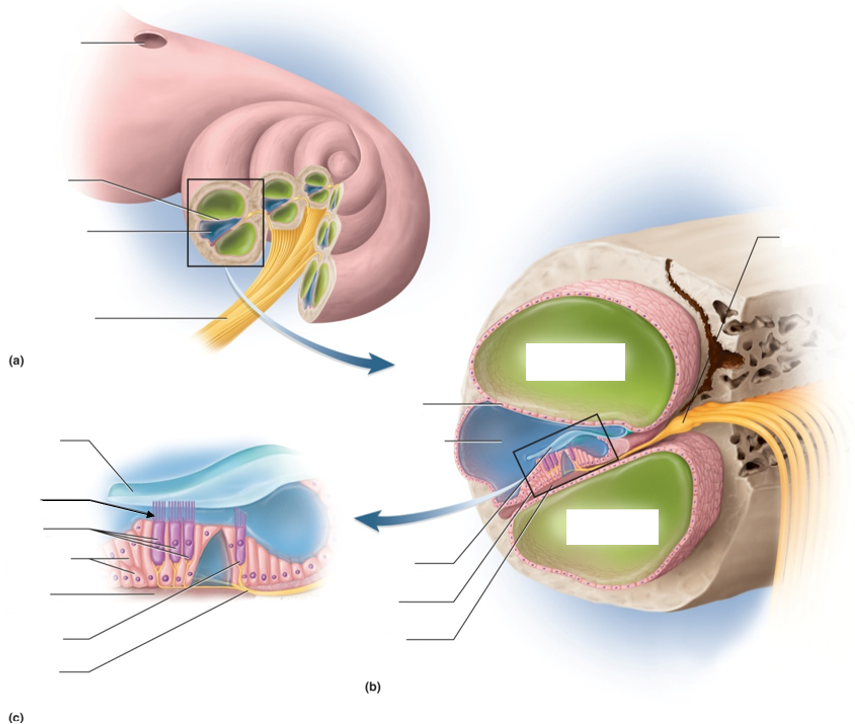
Utricle

Saccule
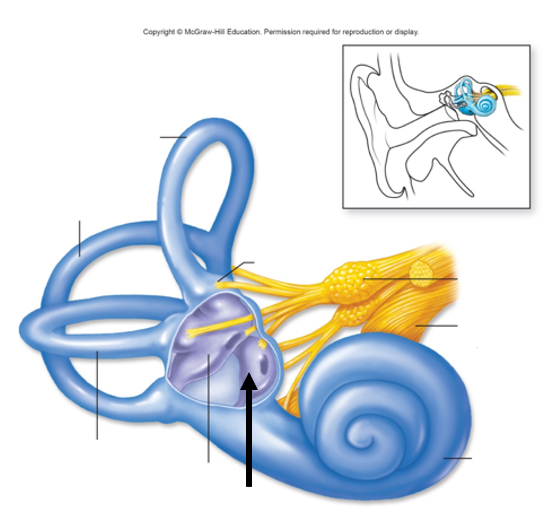
Crista ampullaris

Cupula
